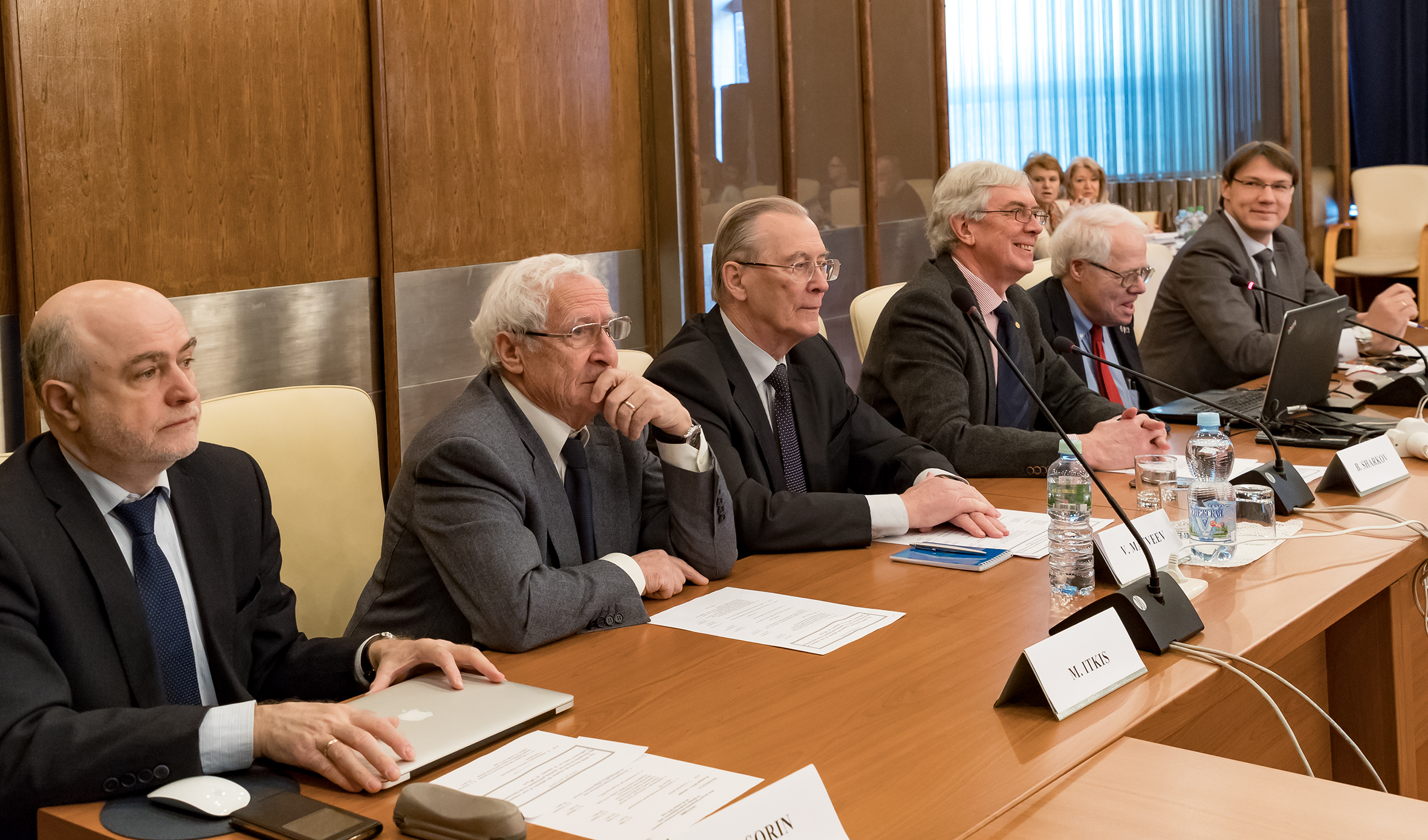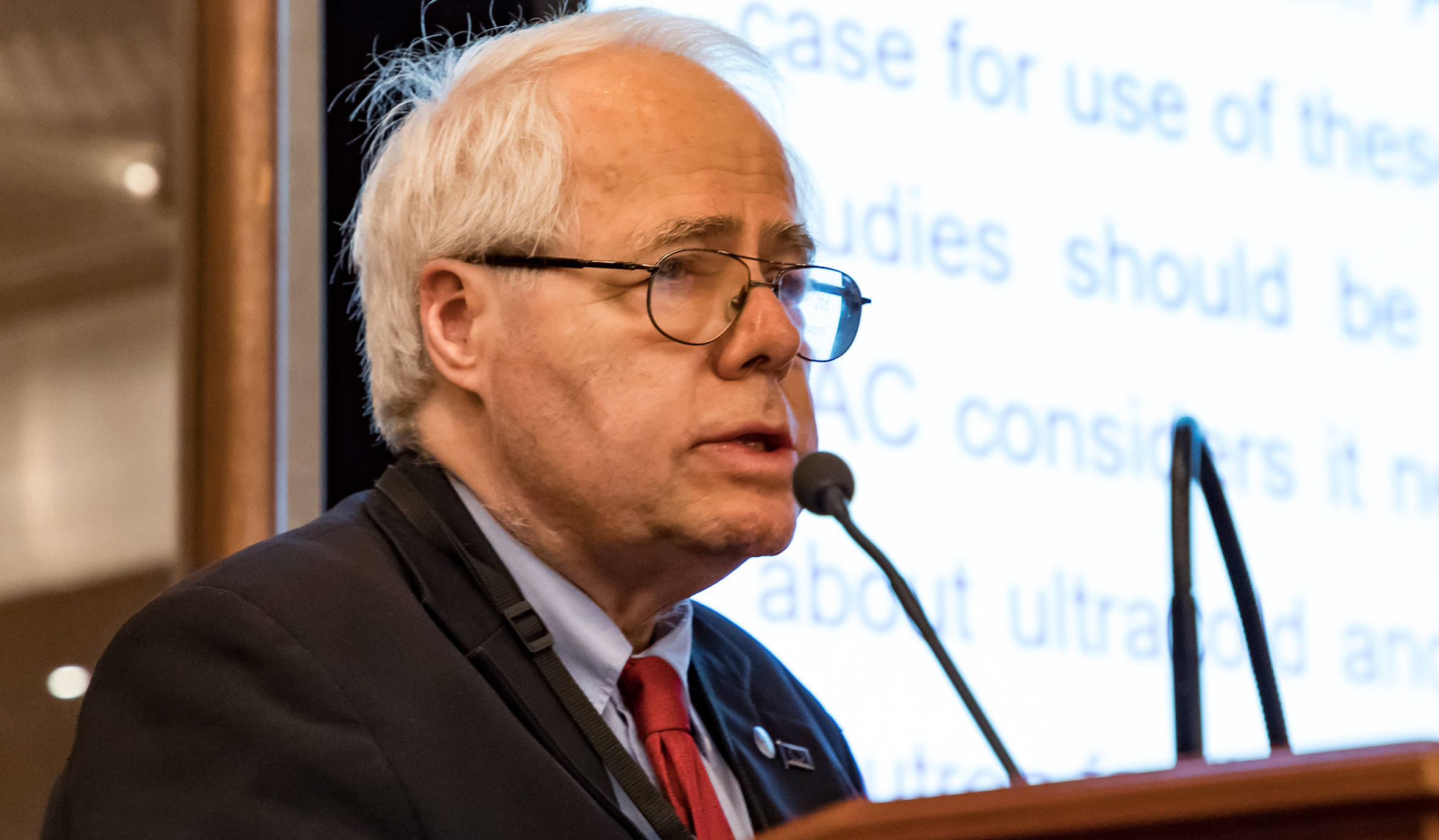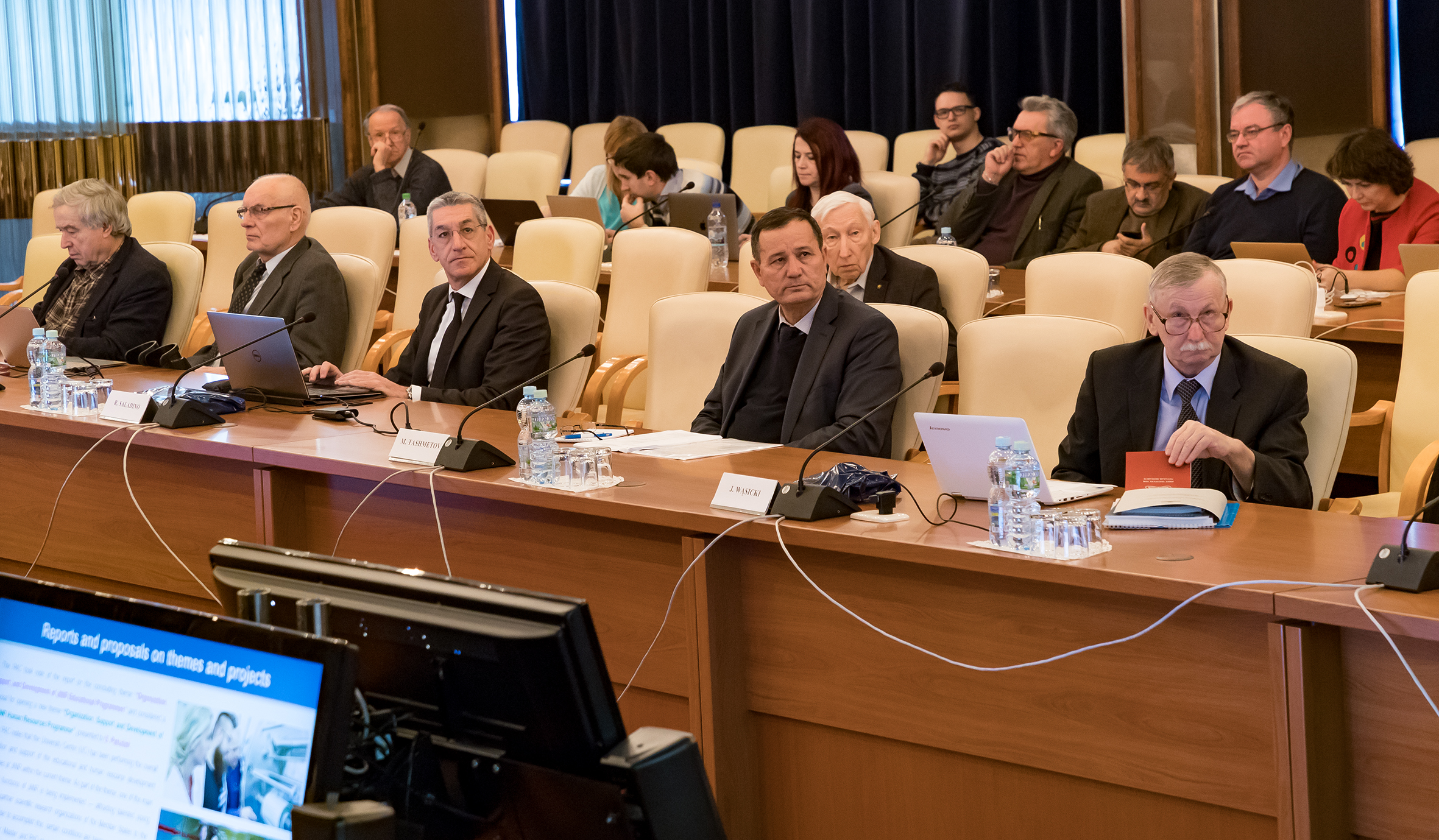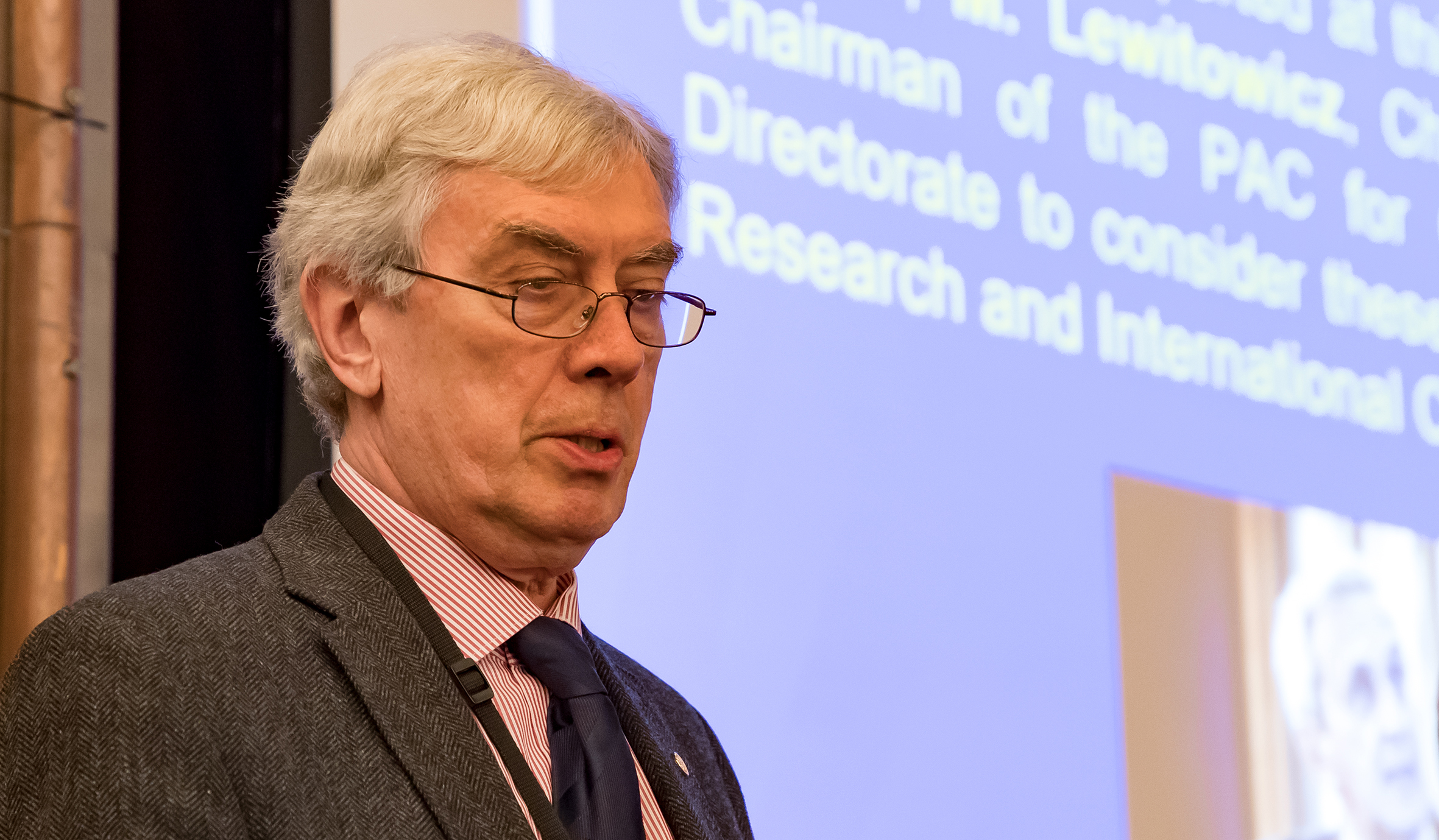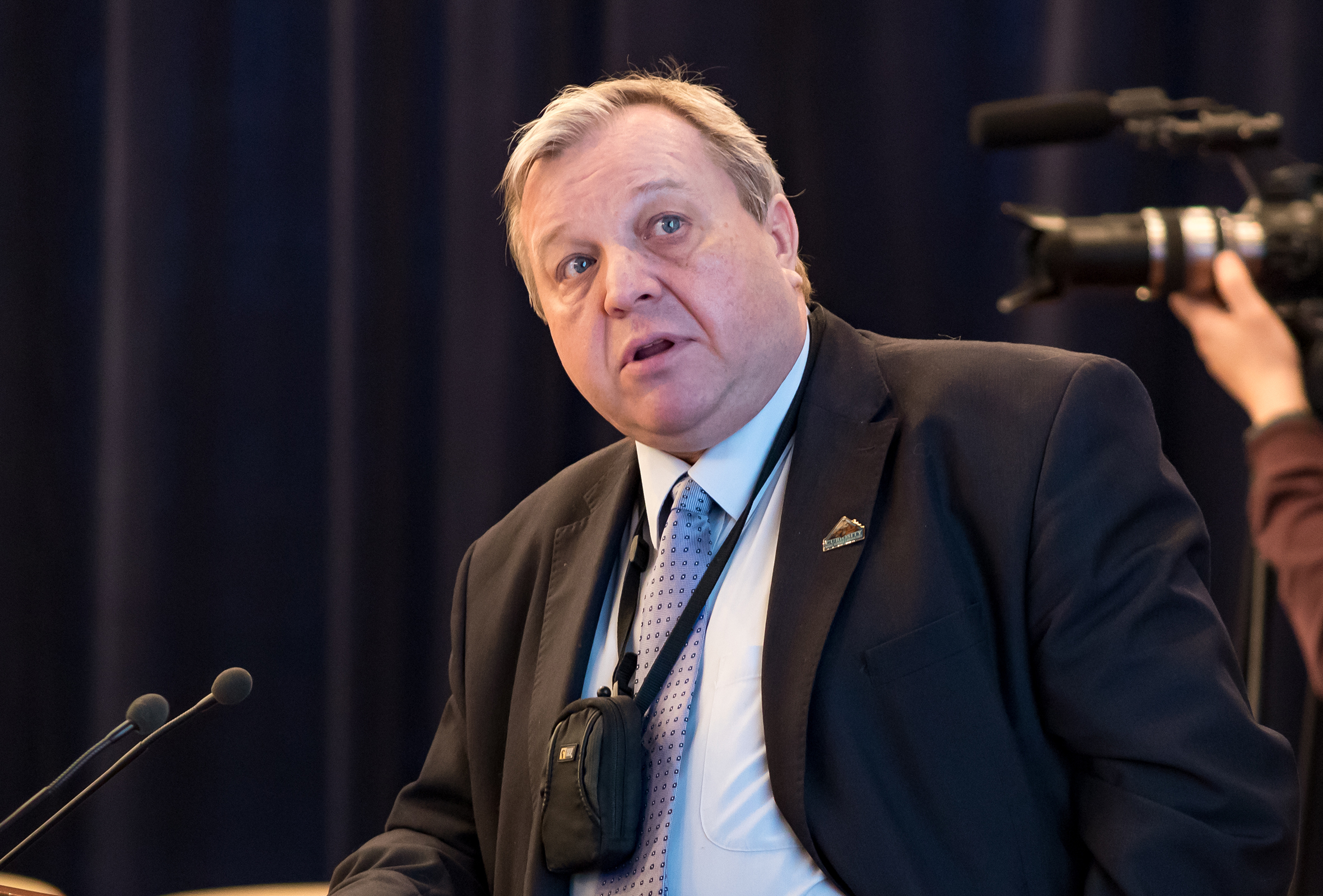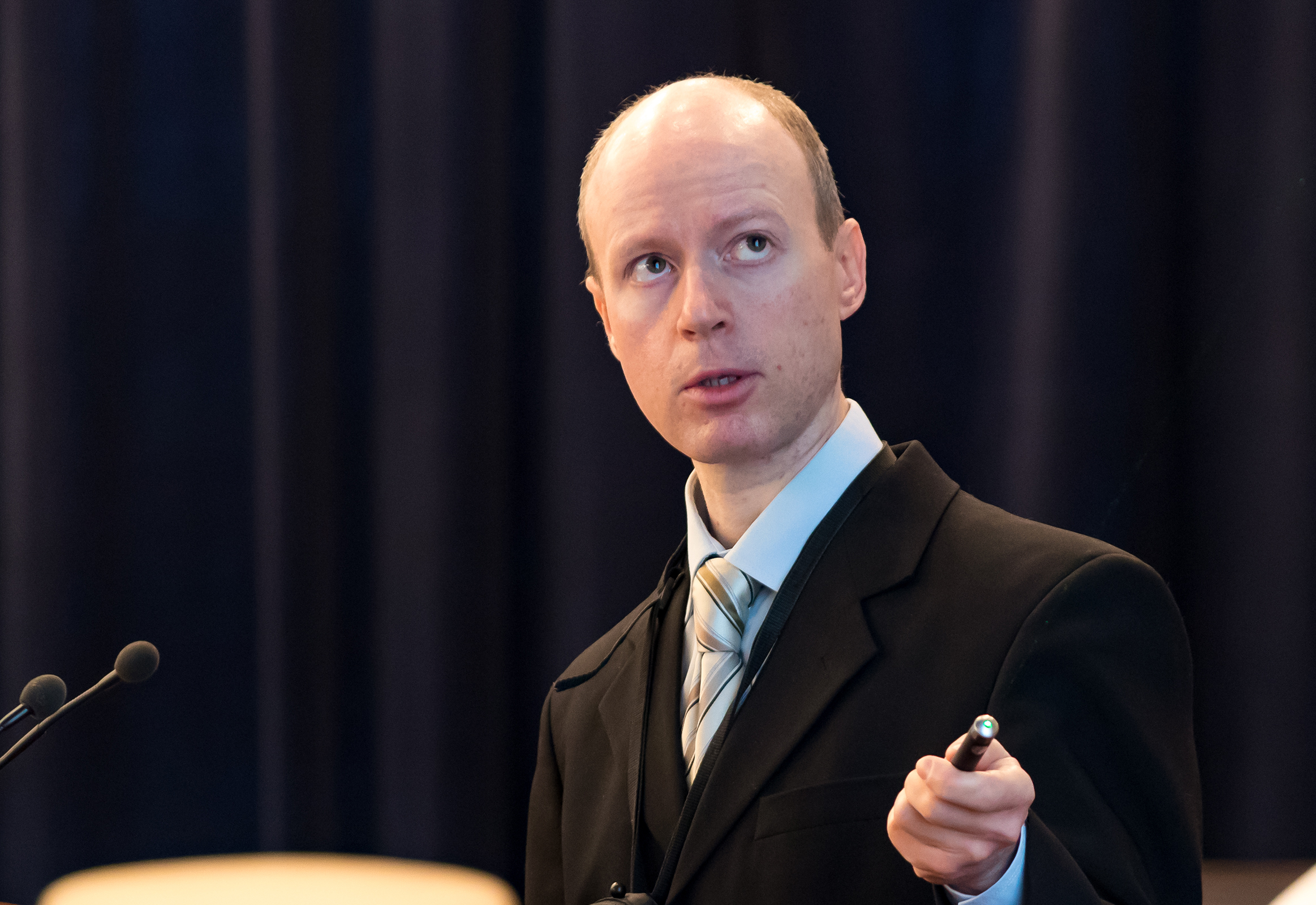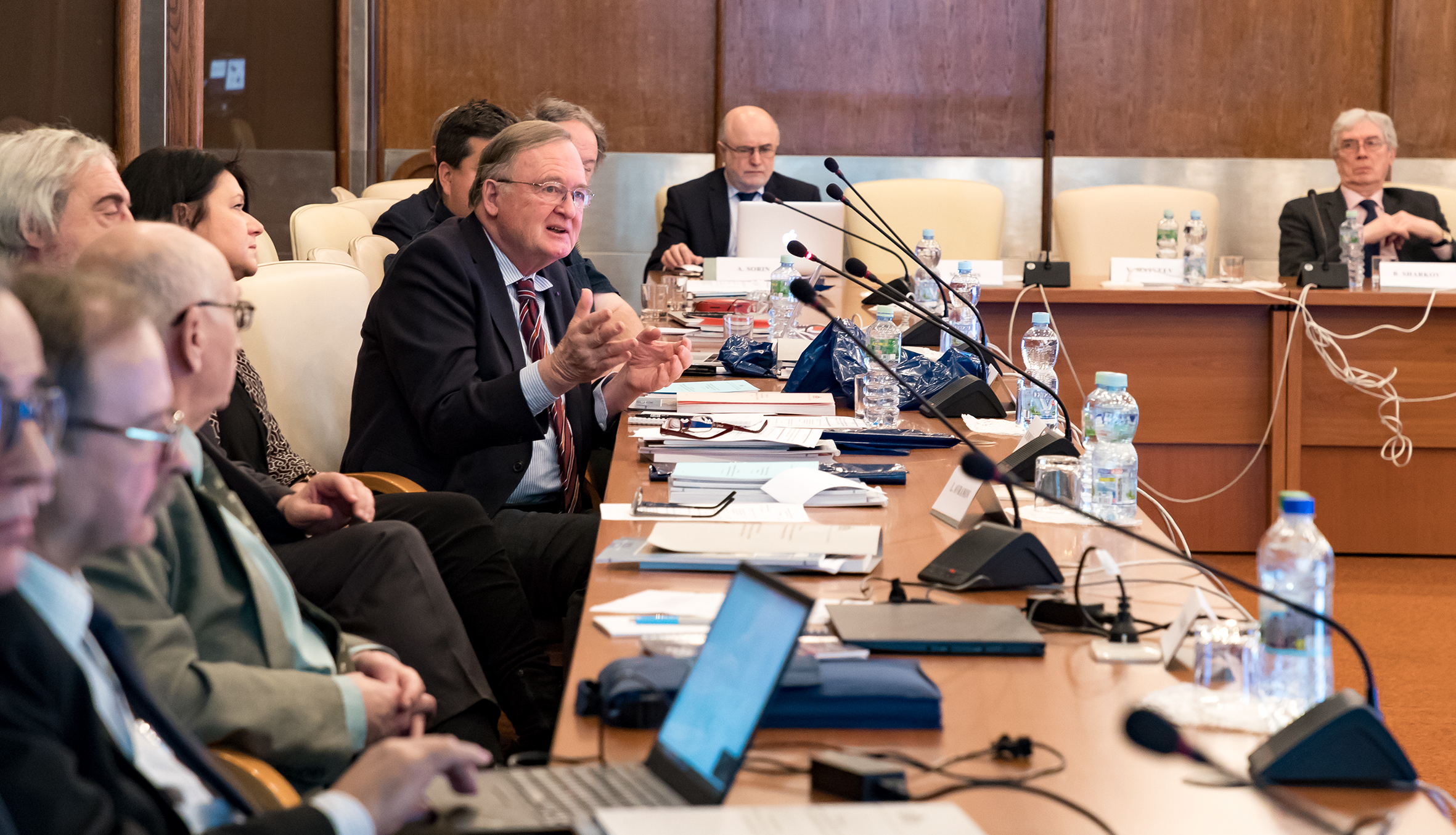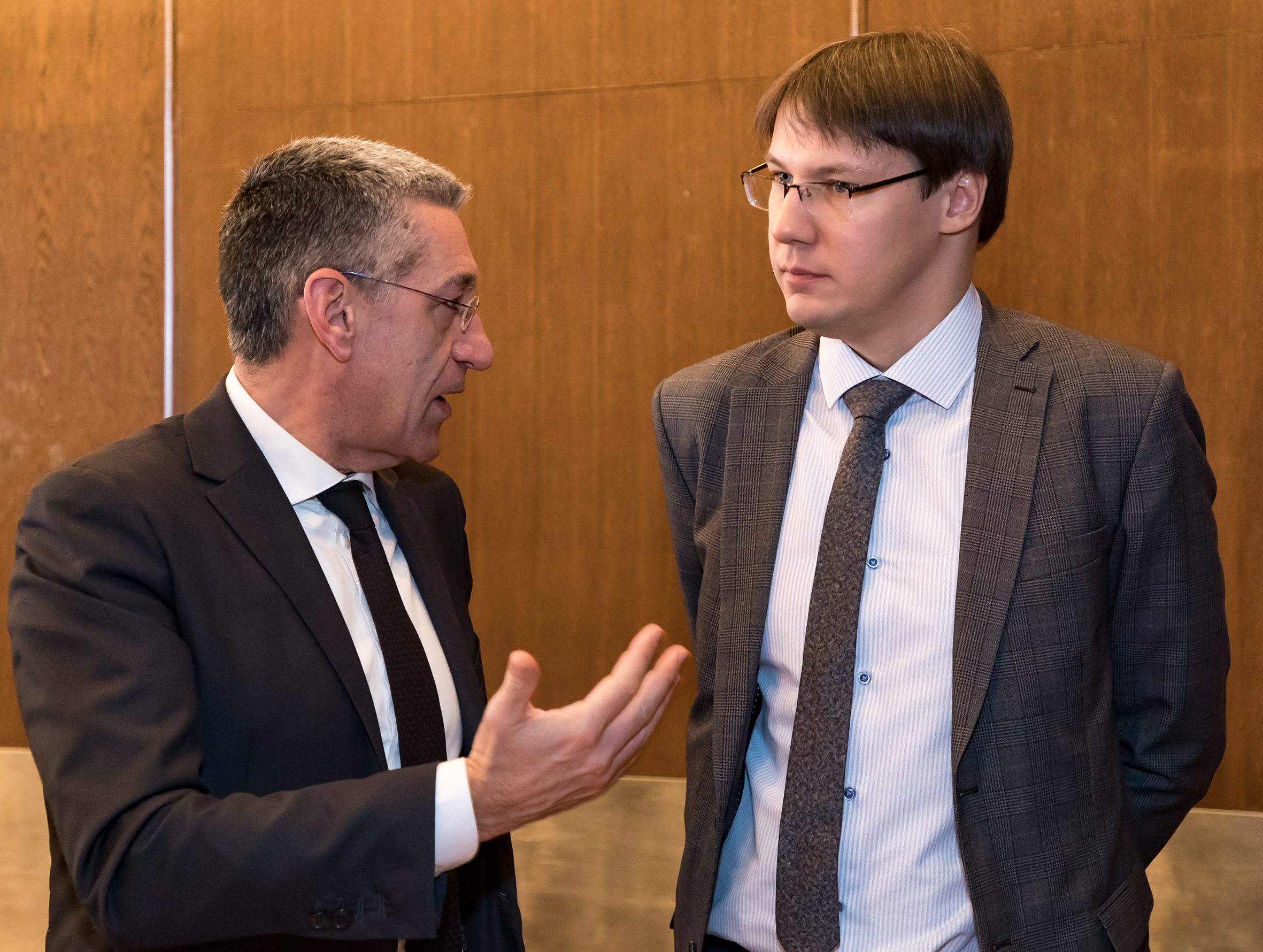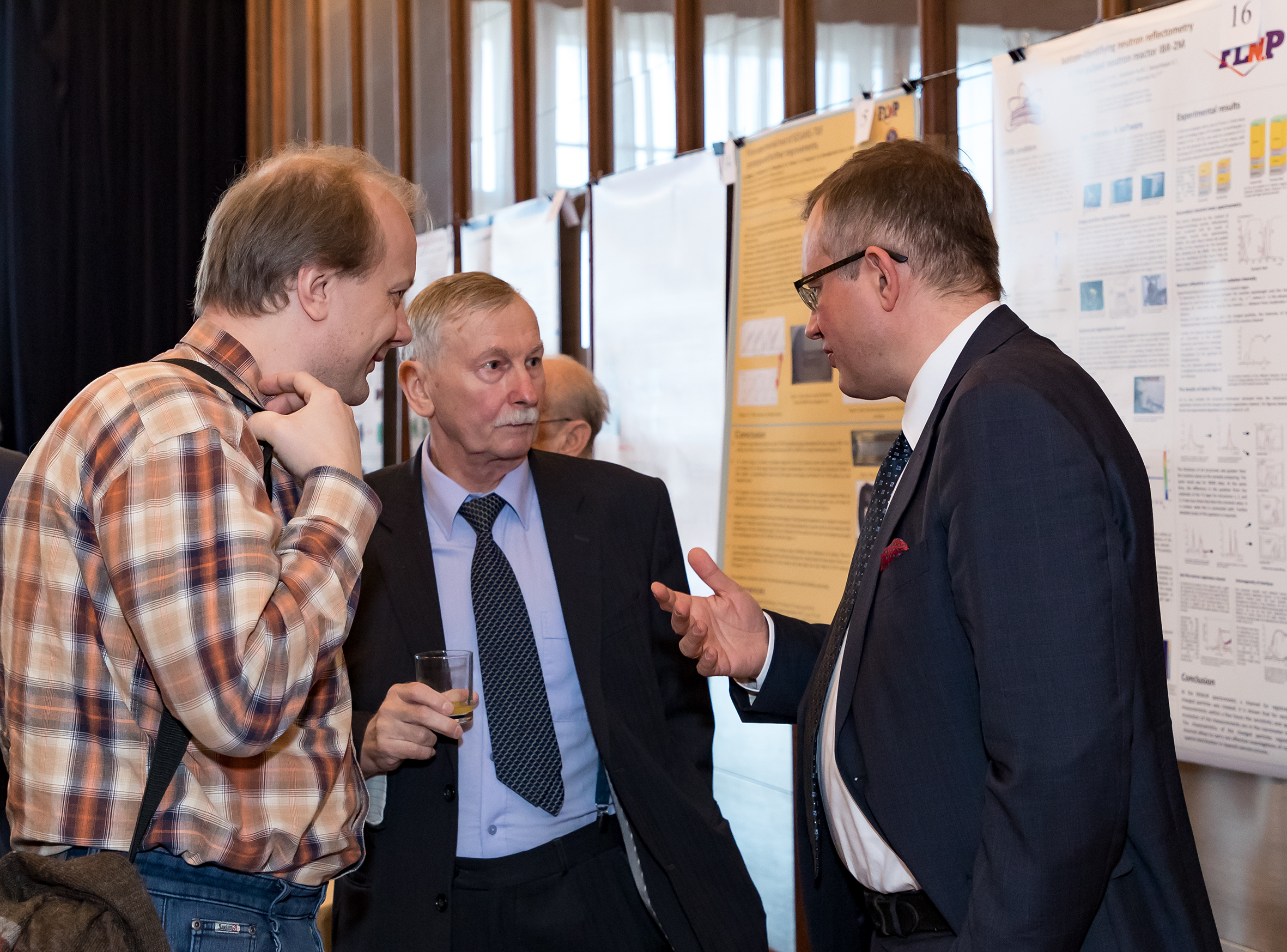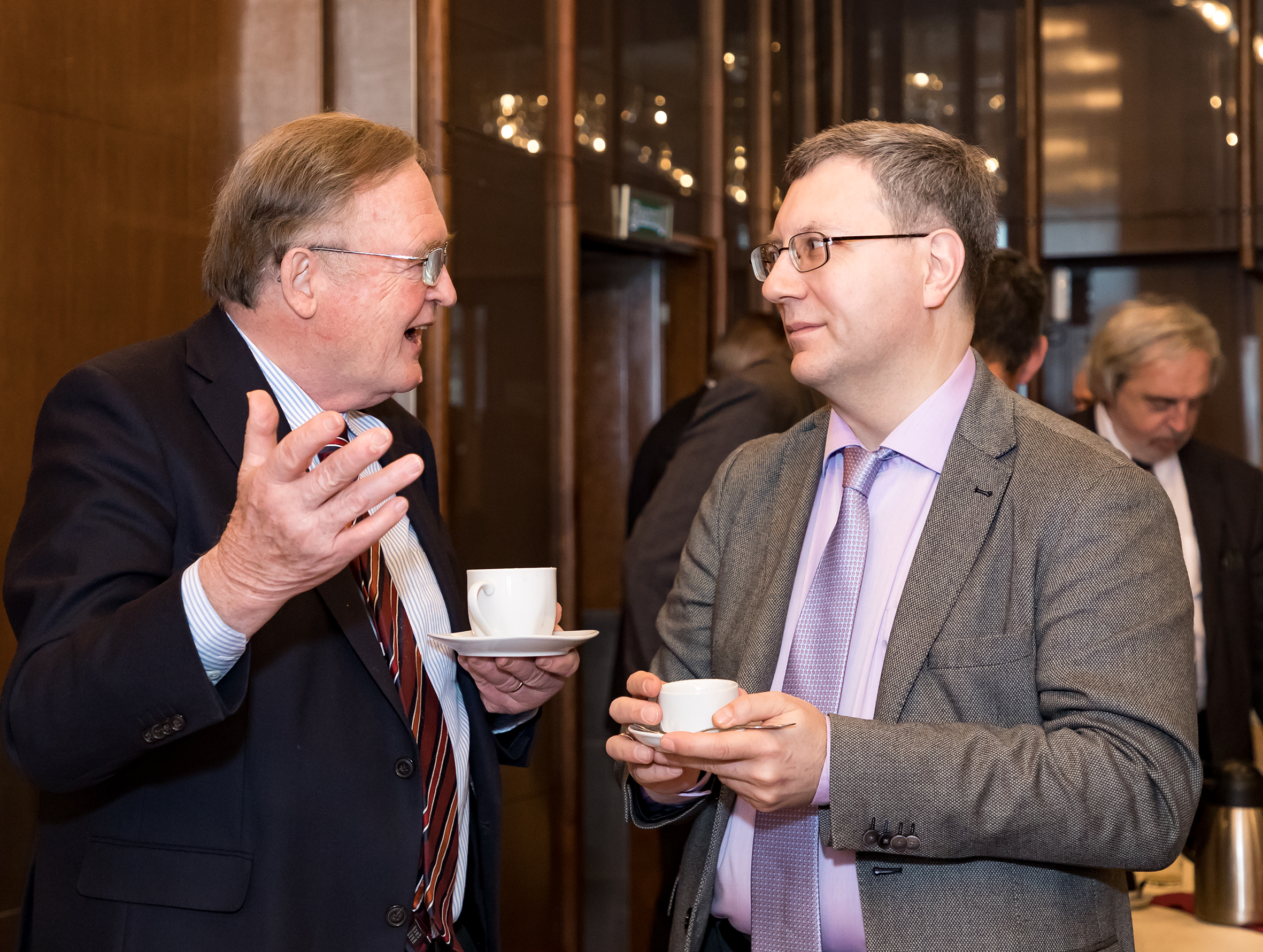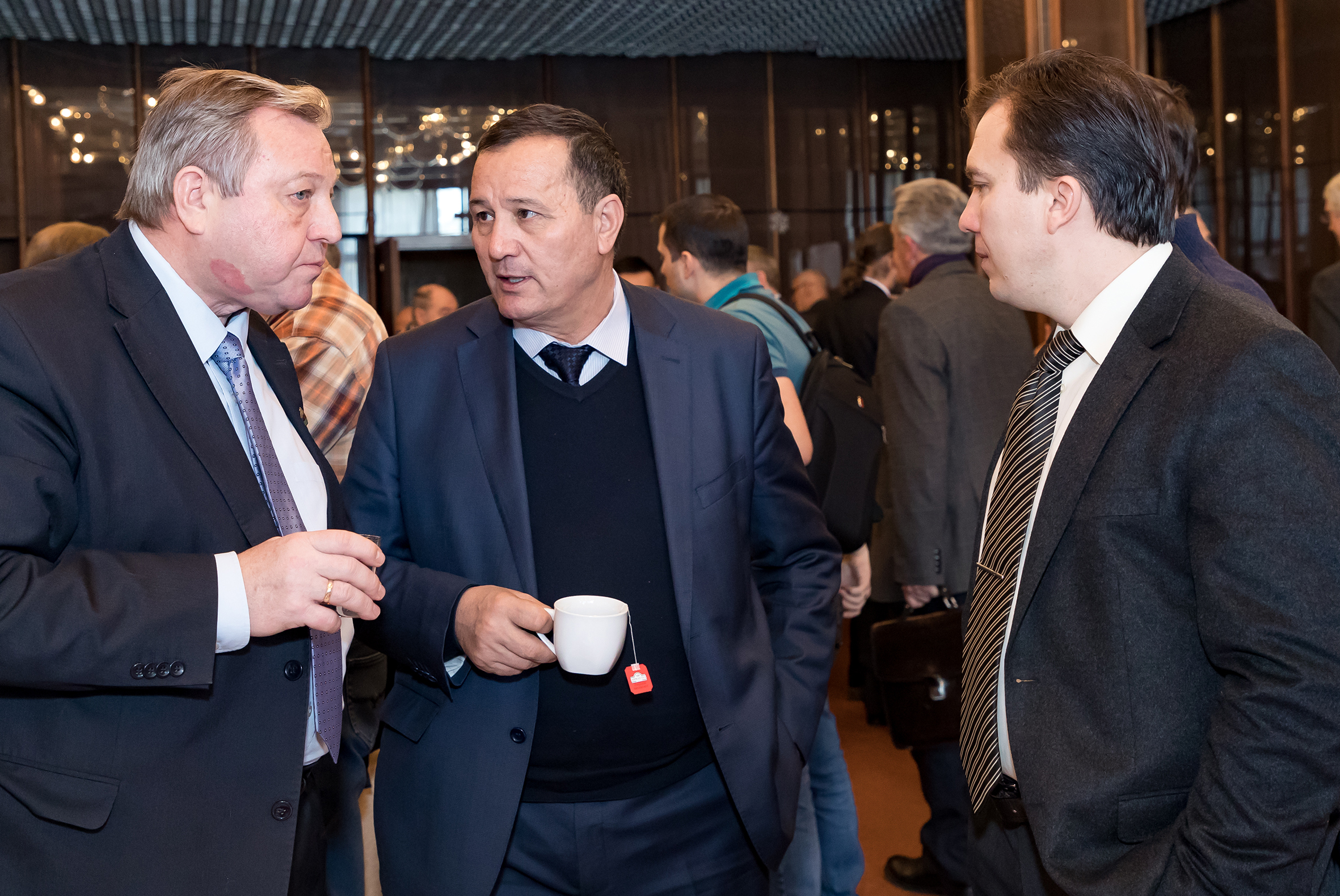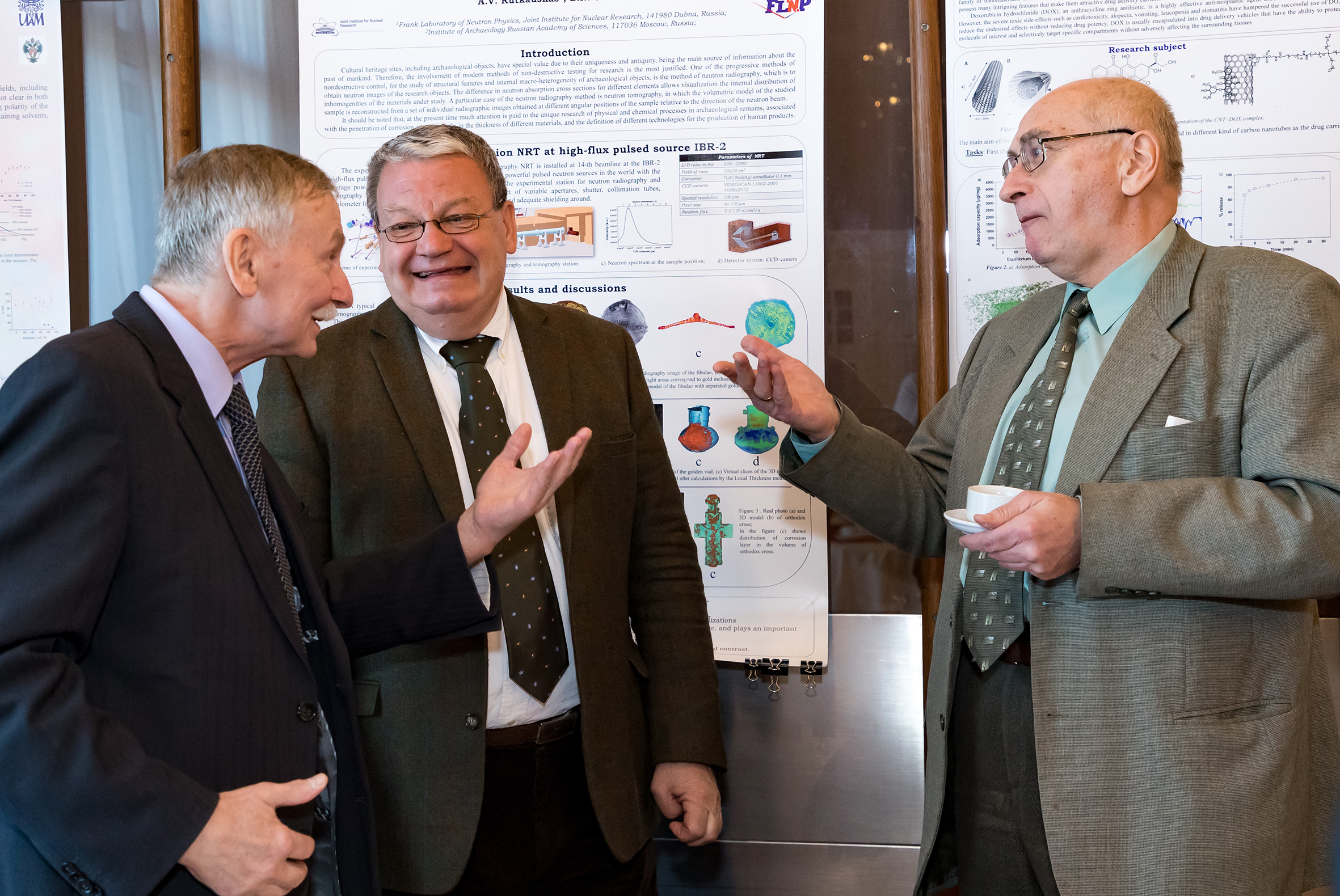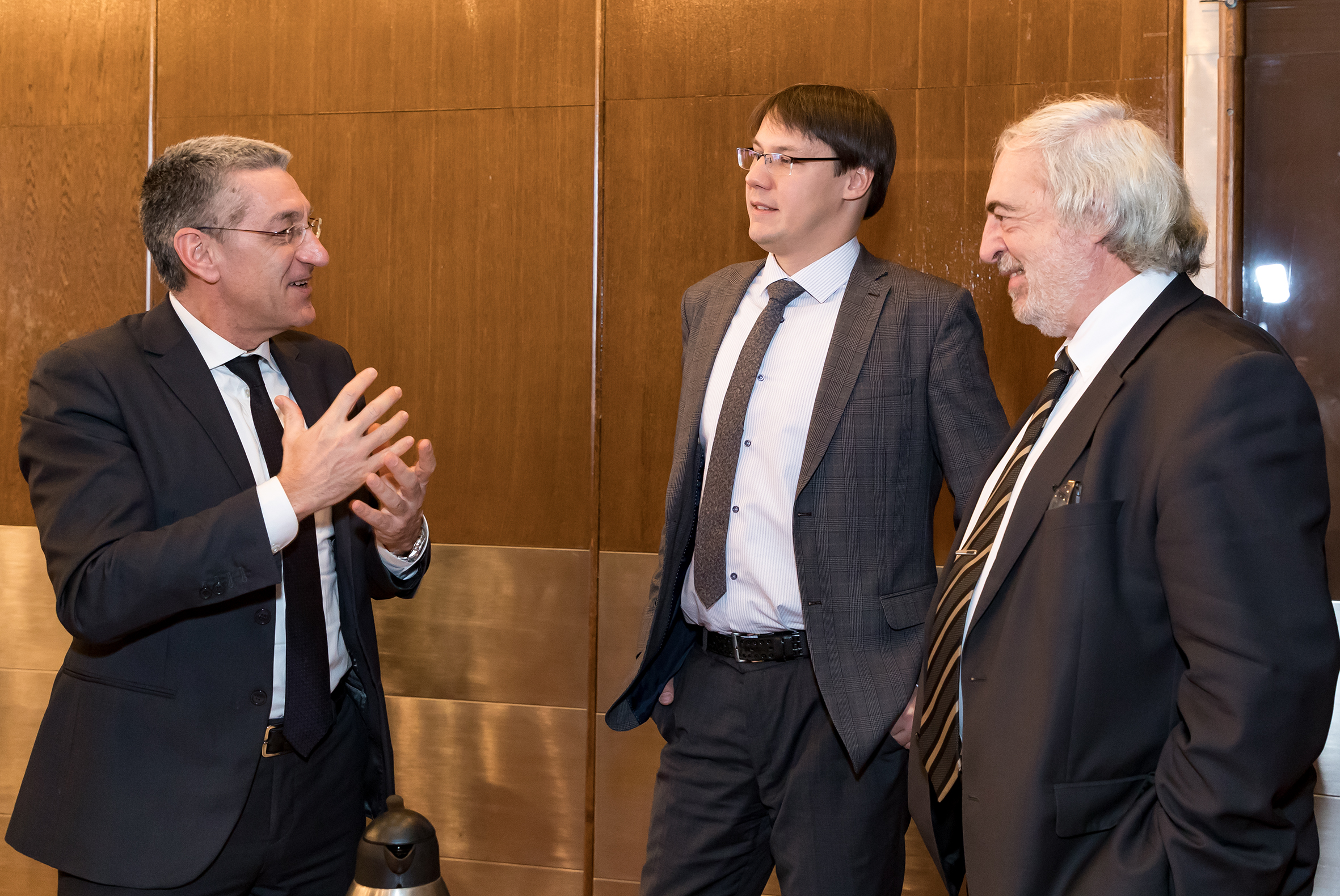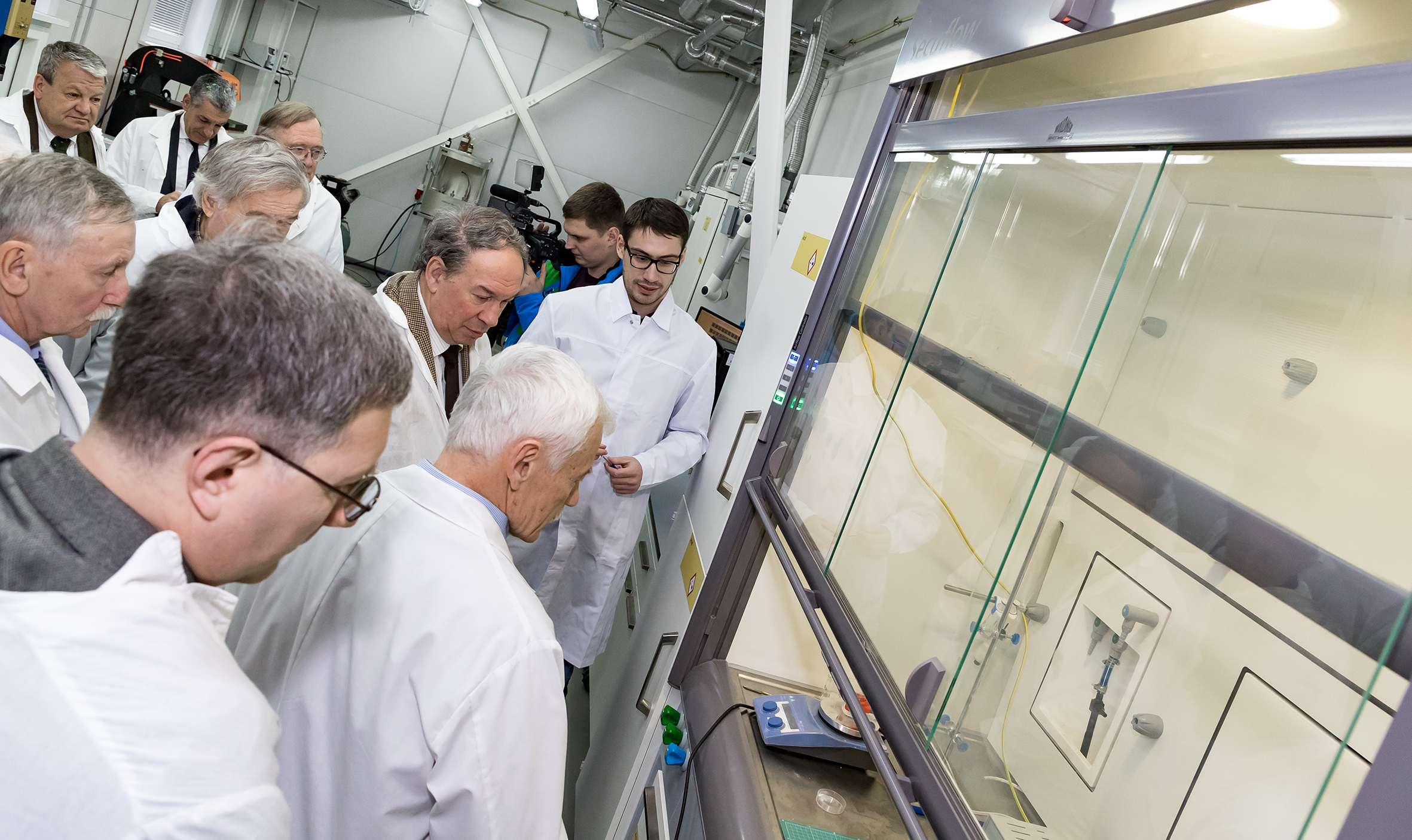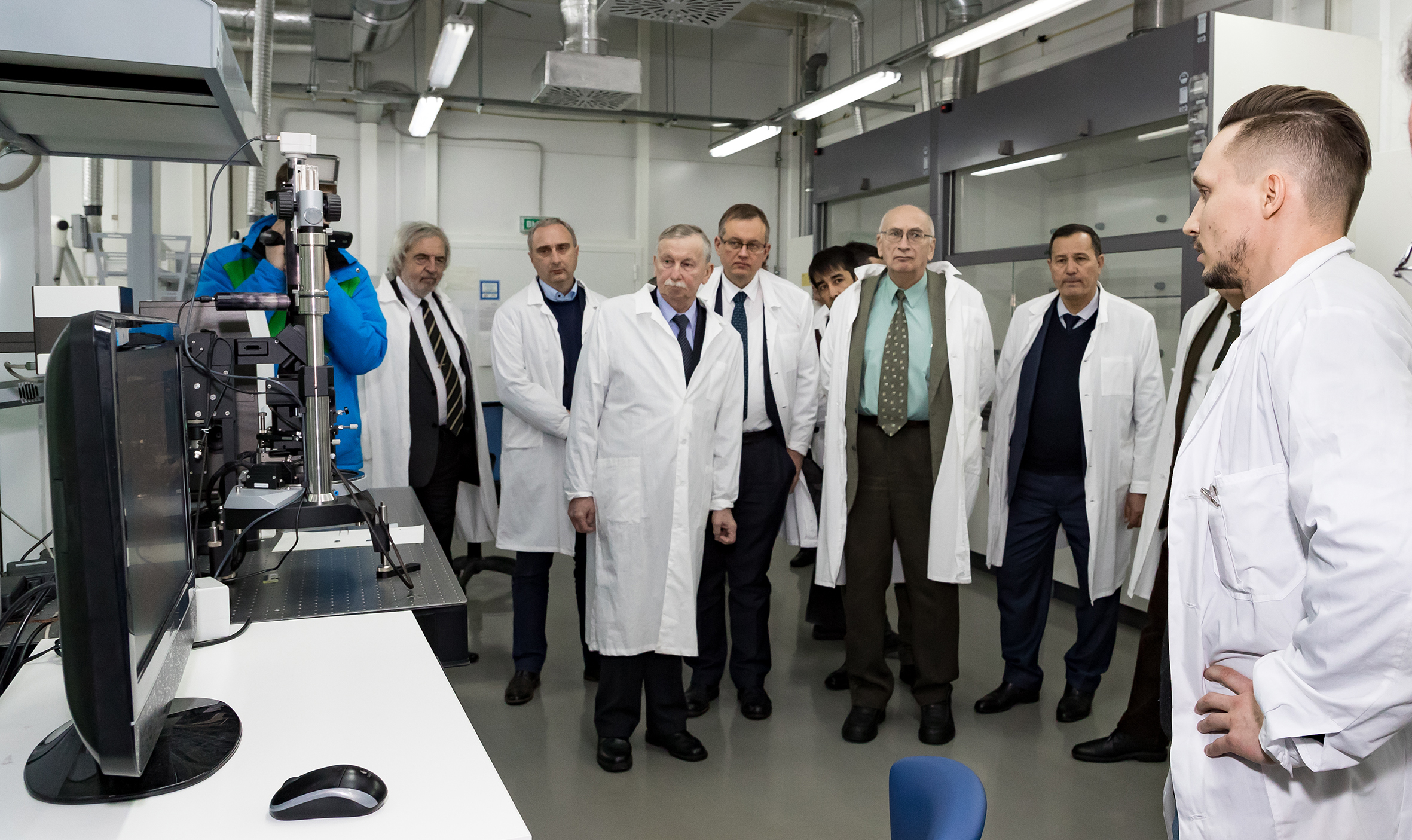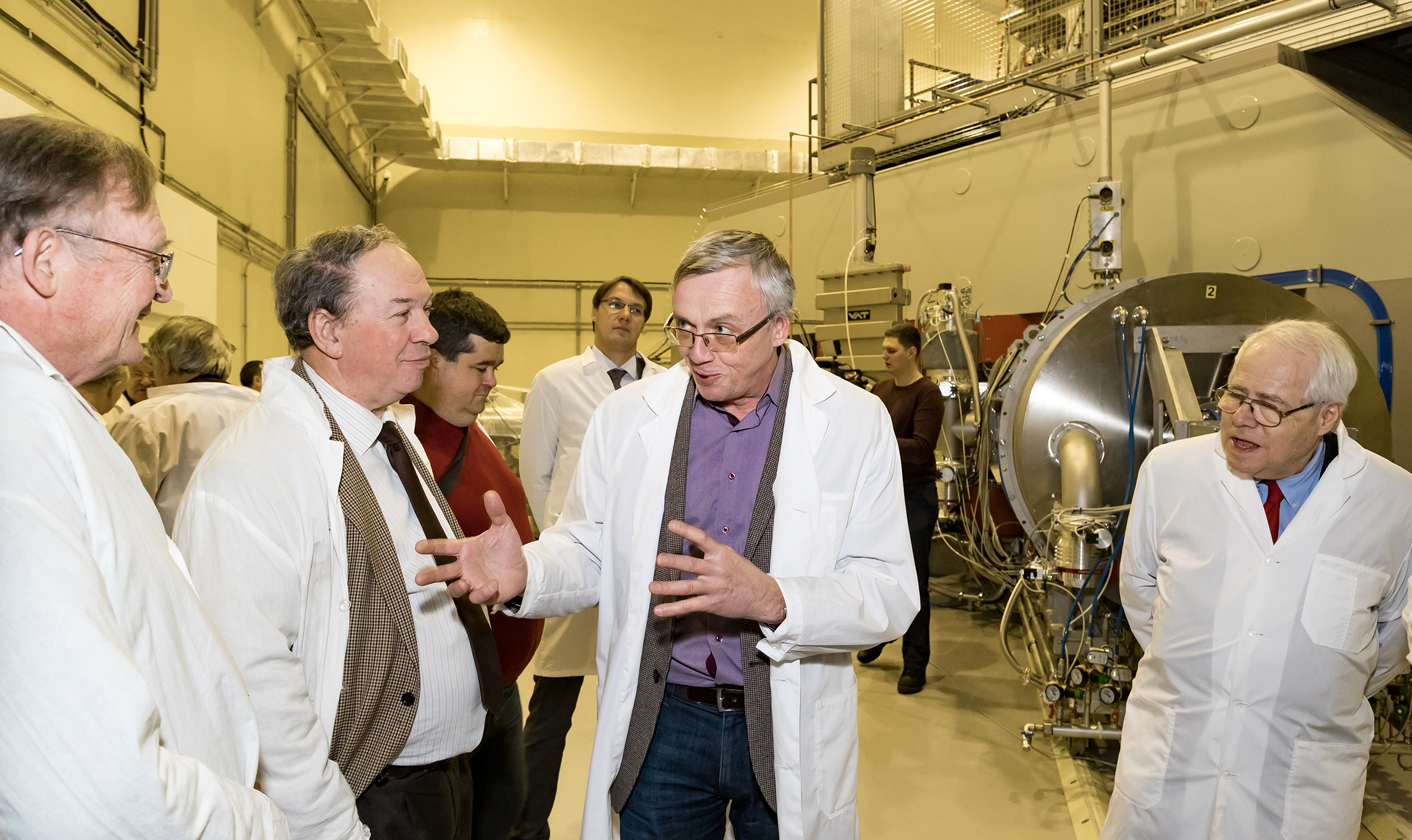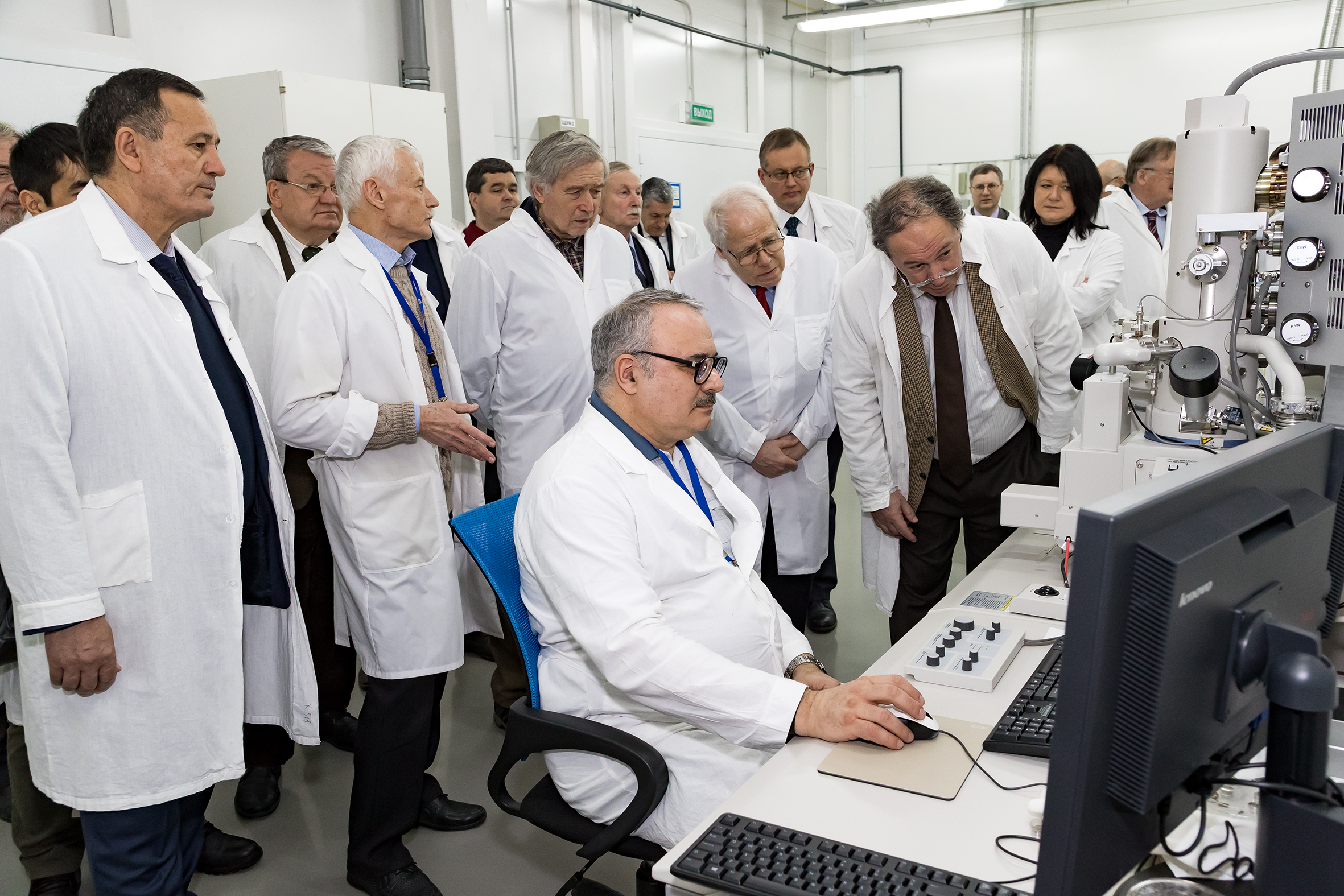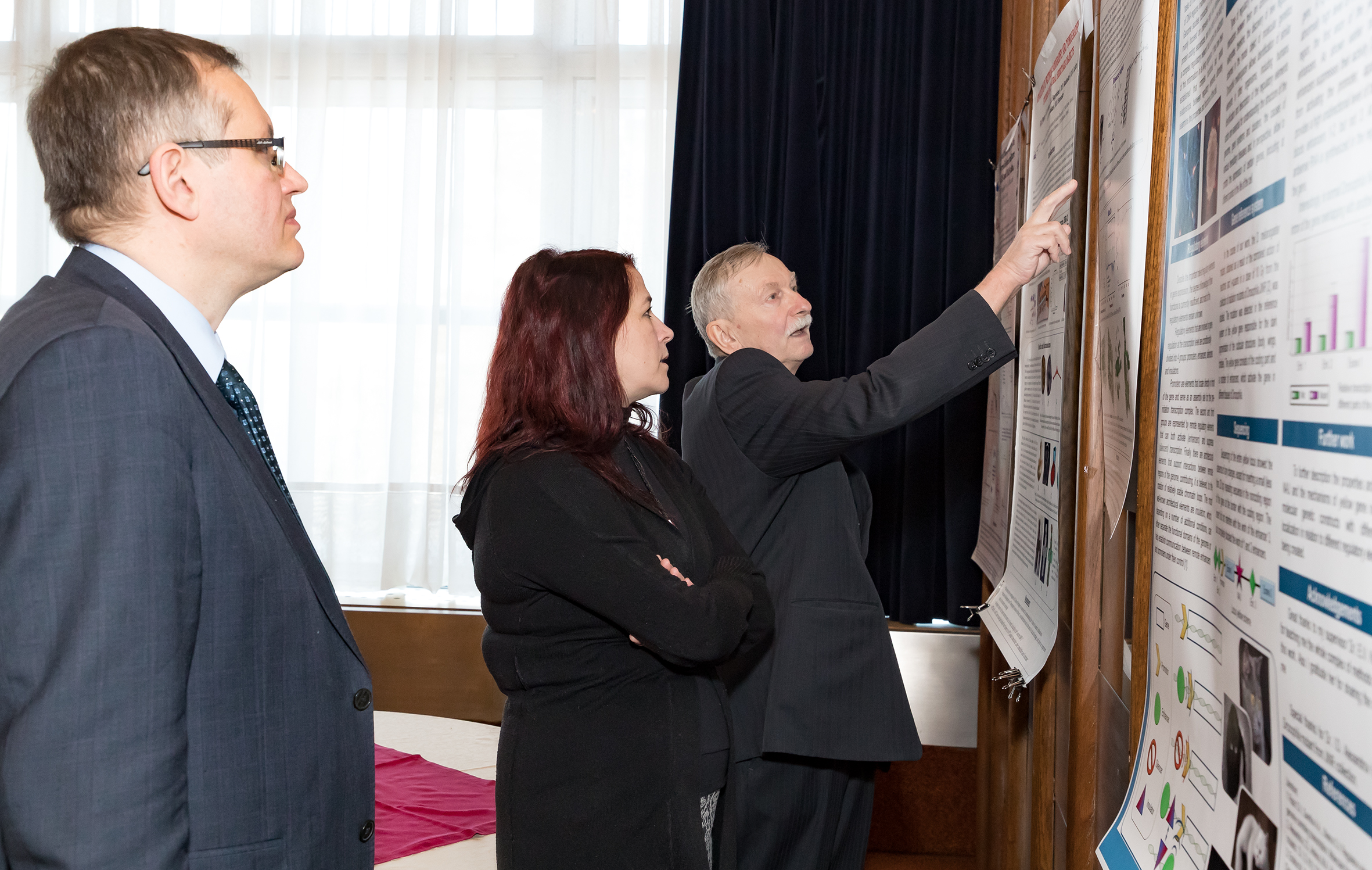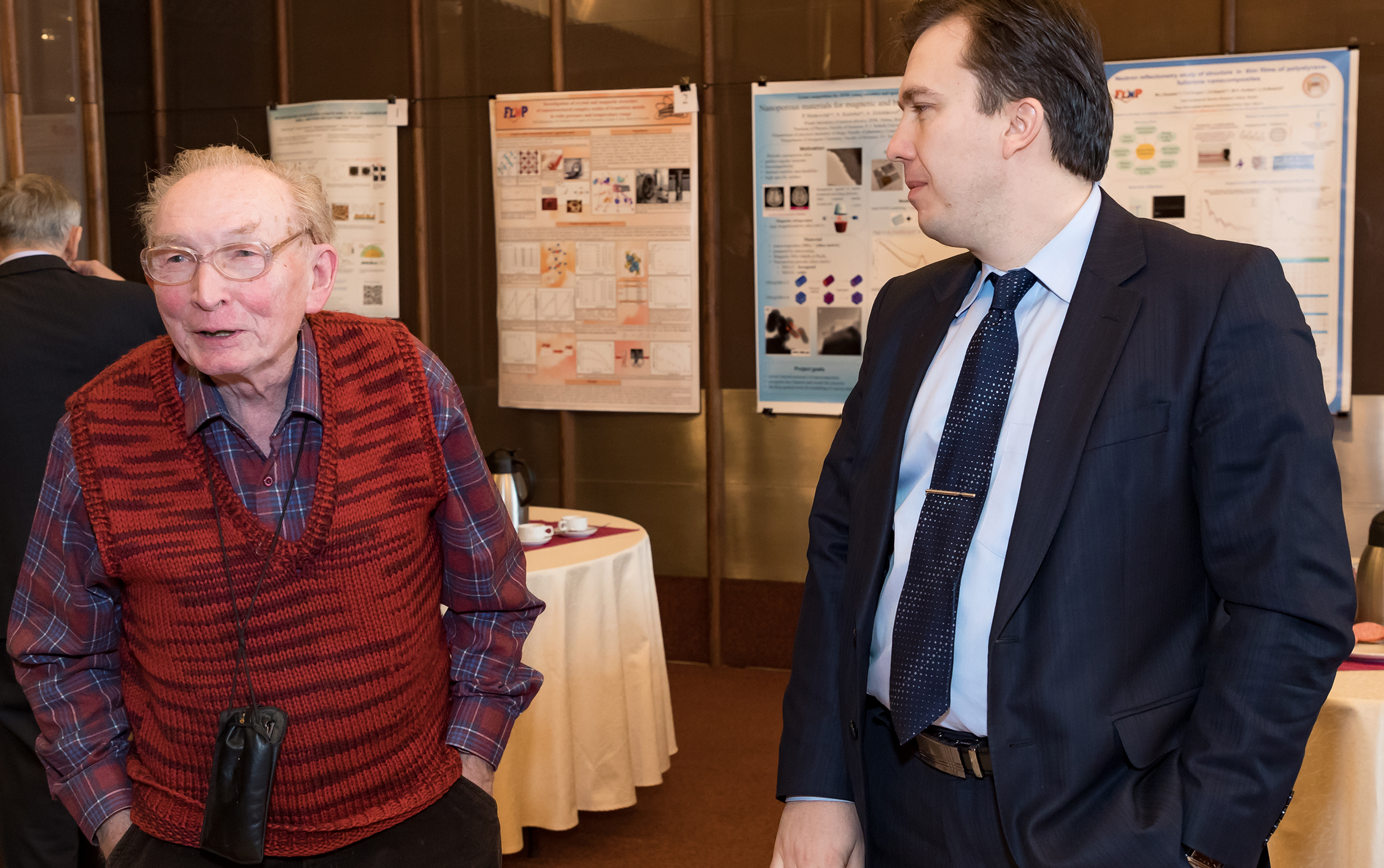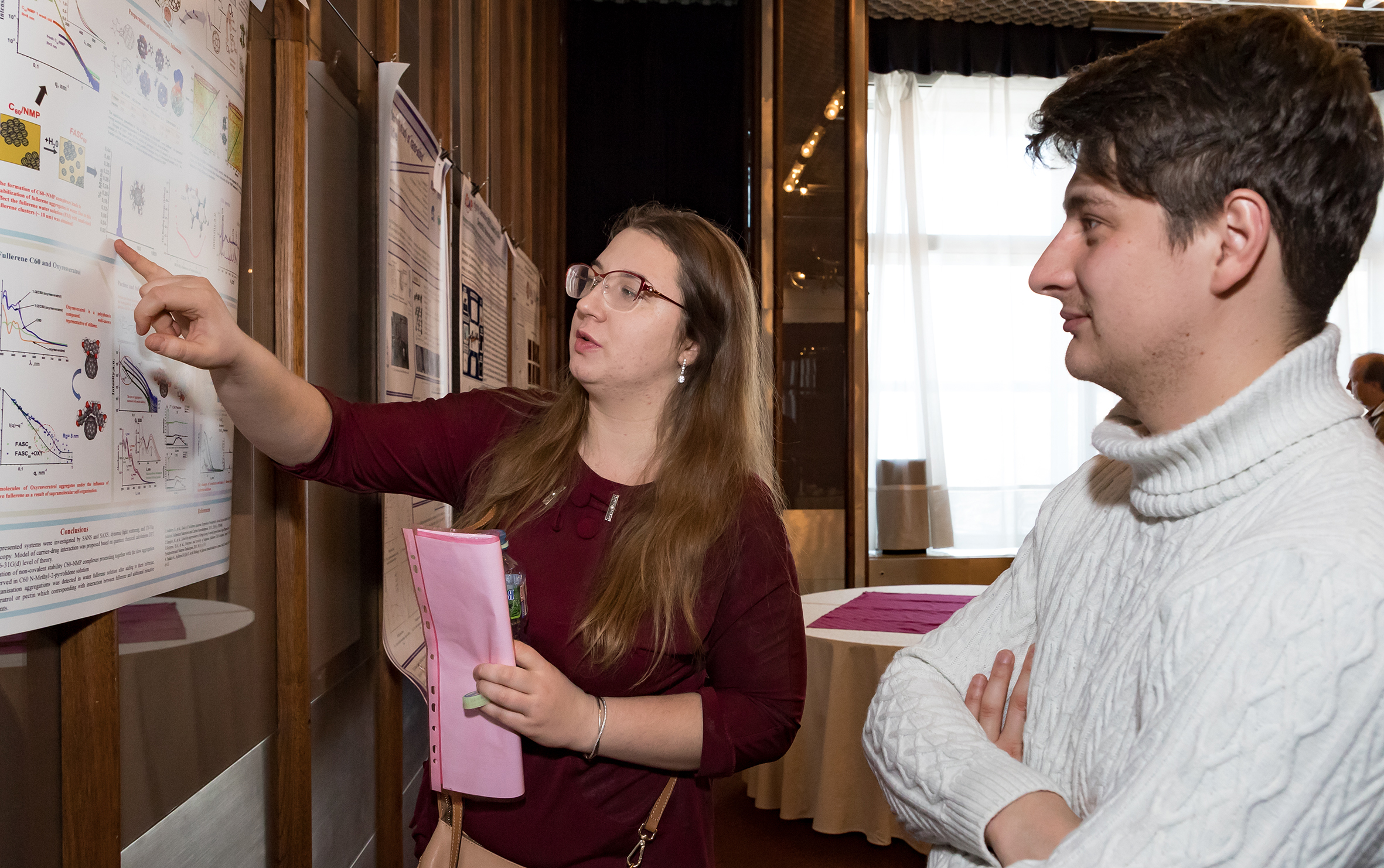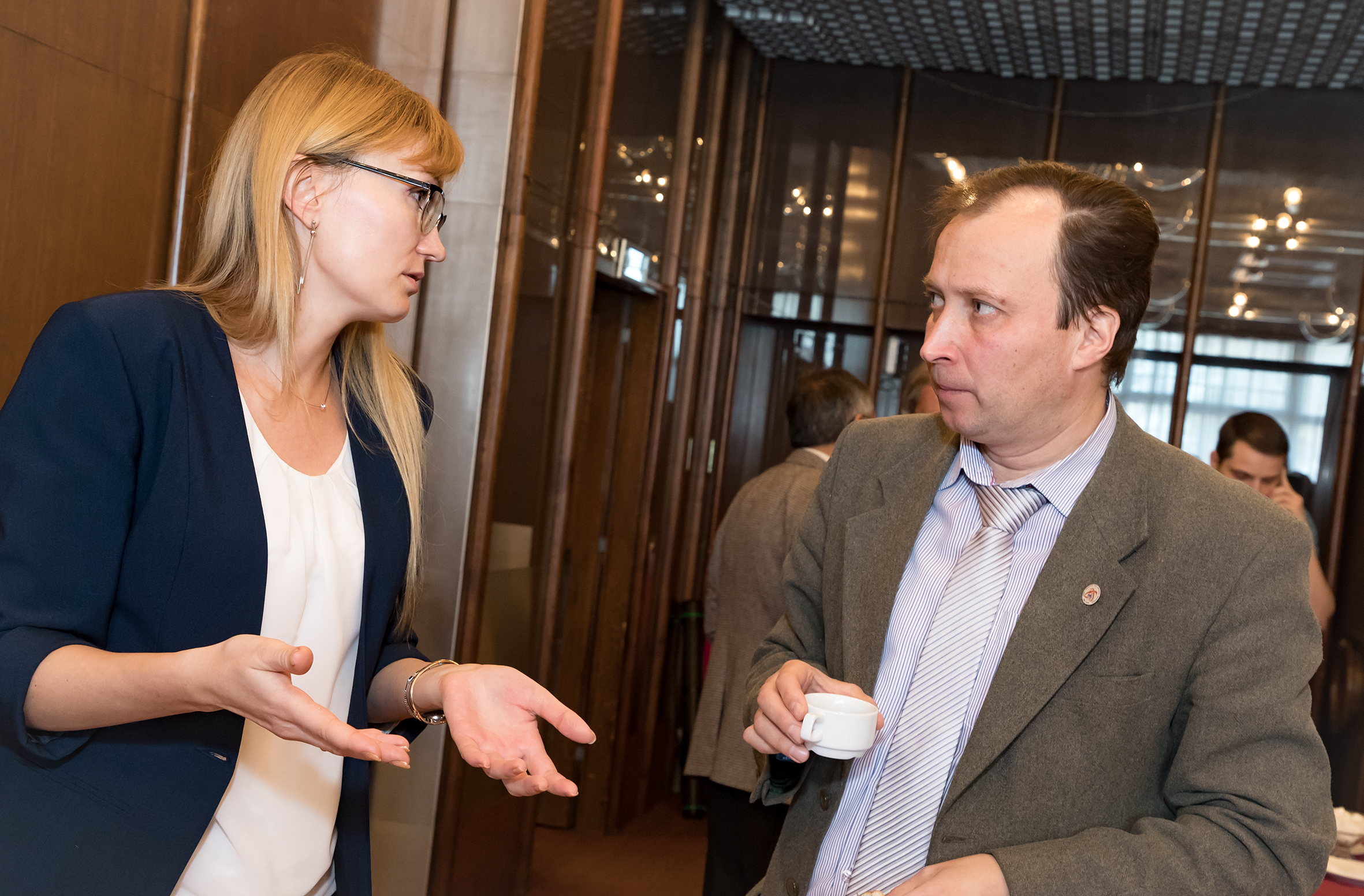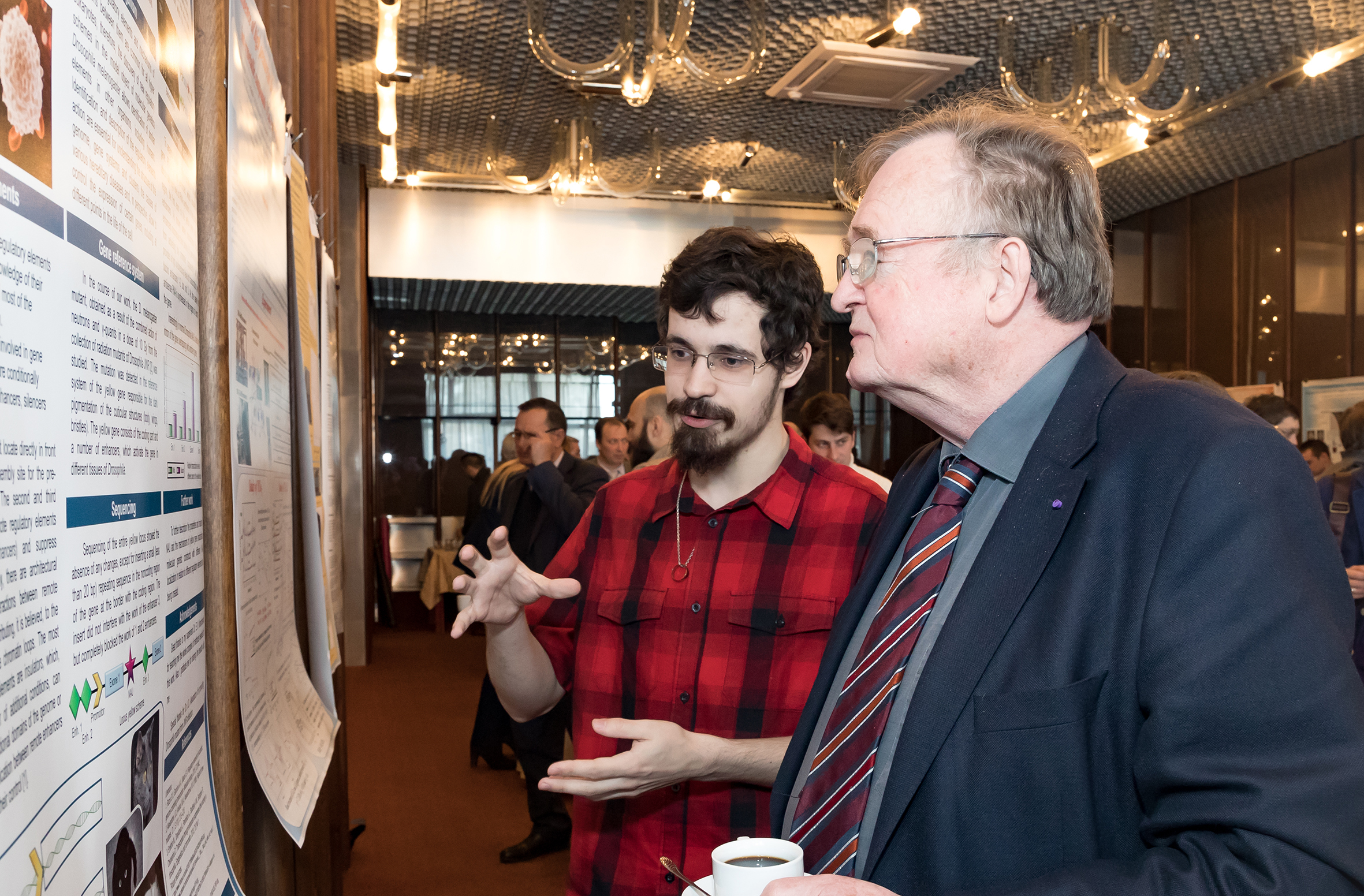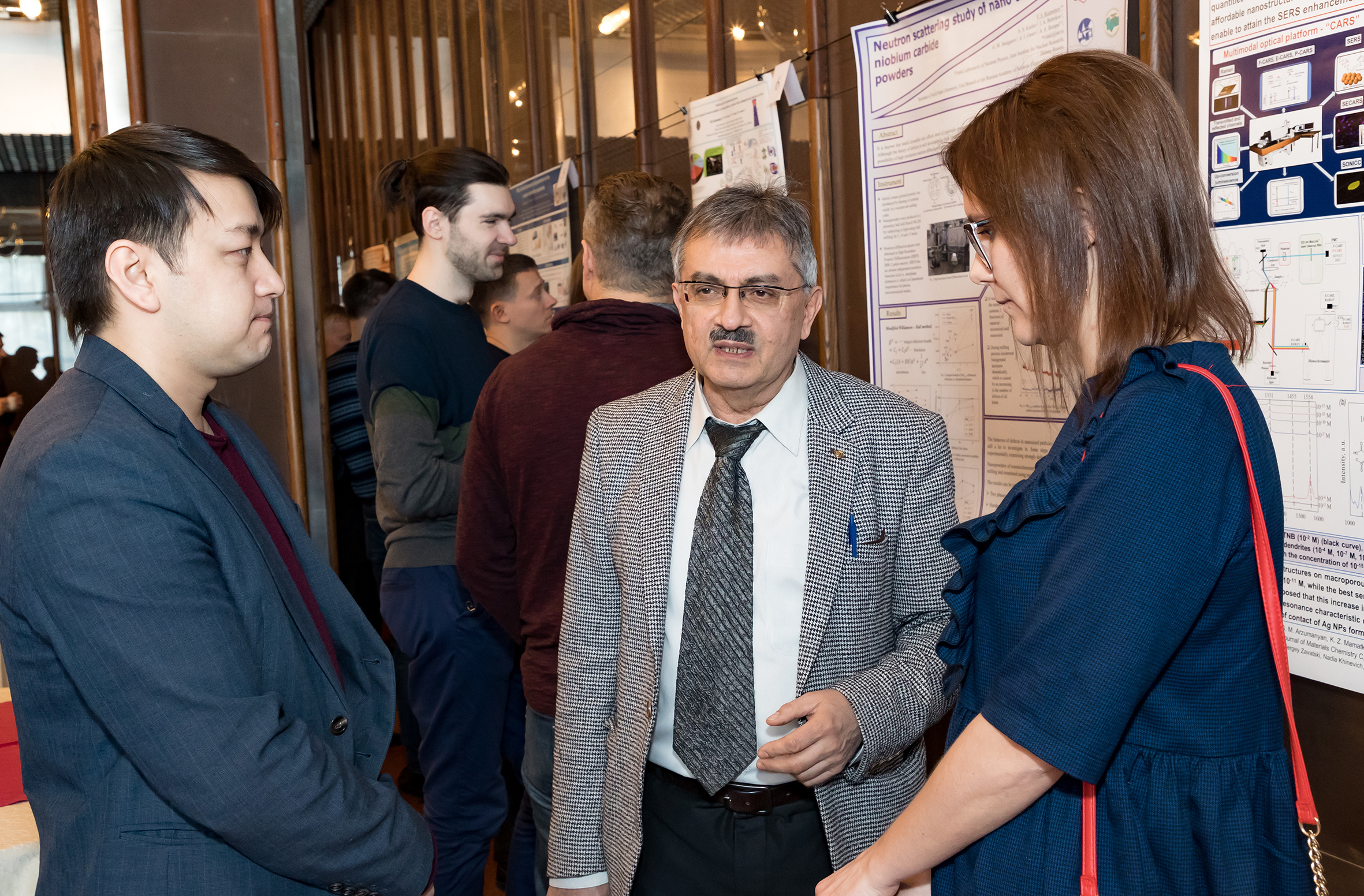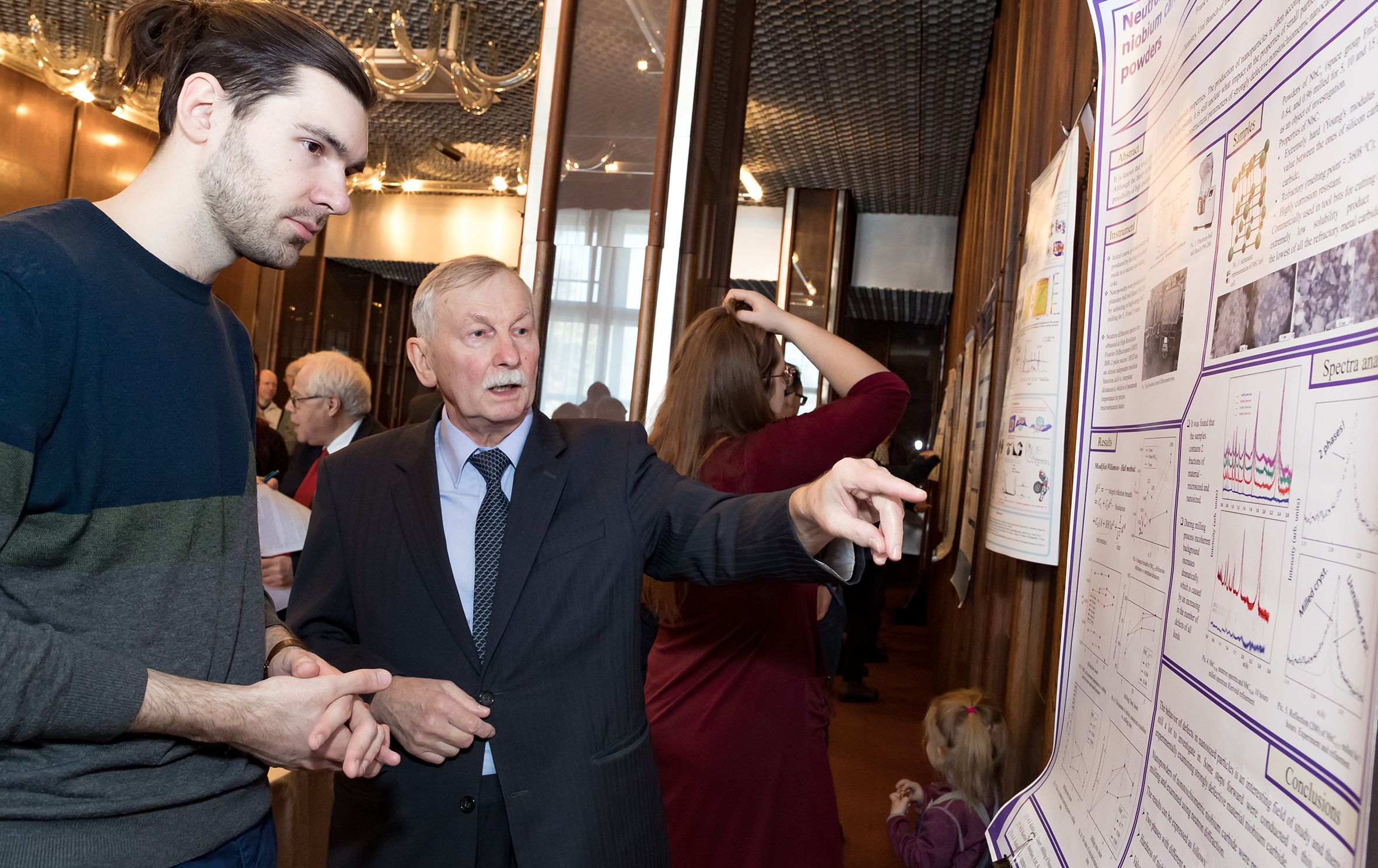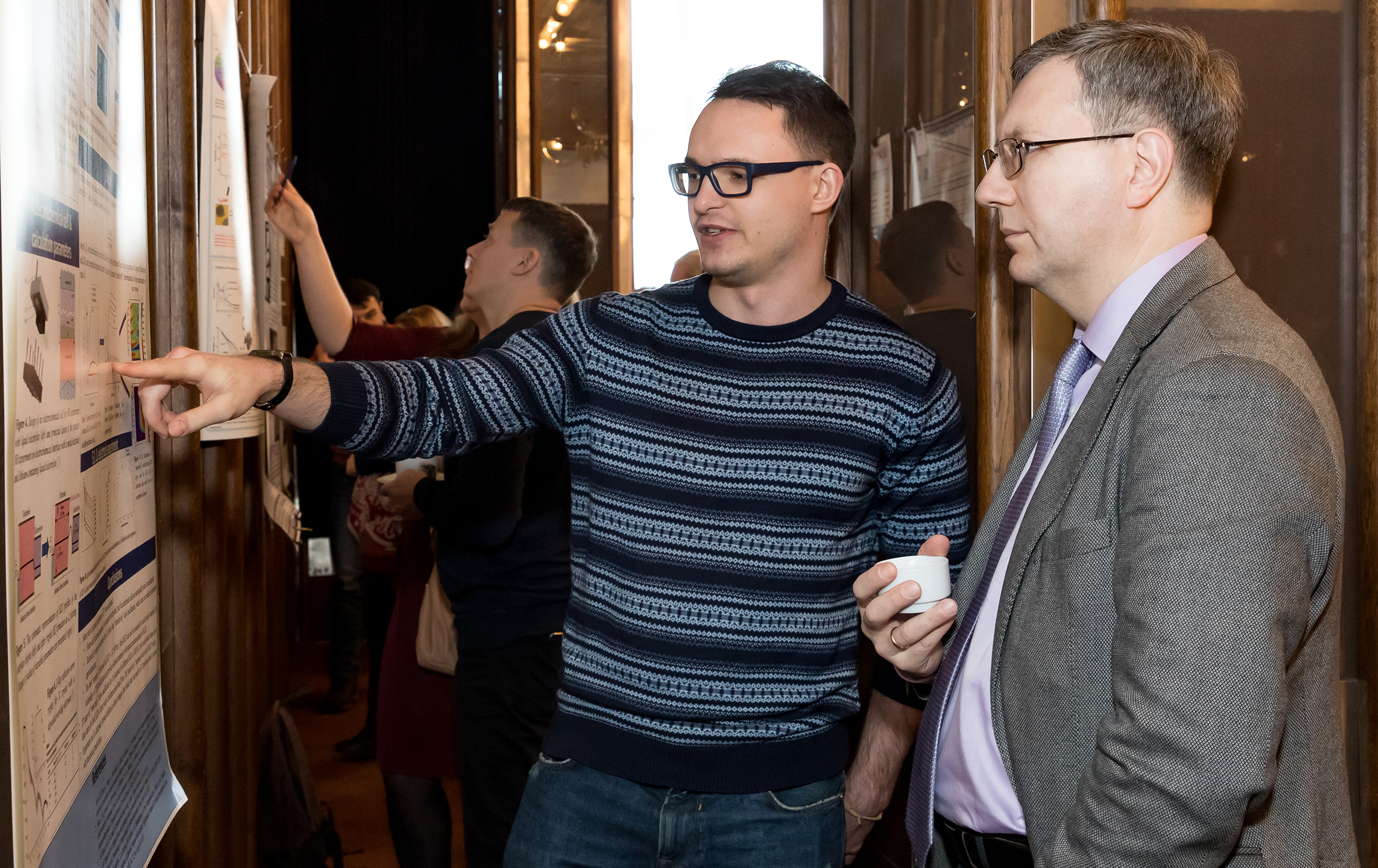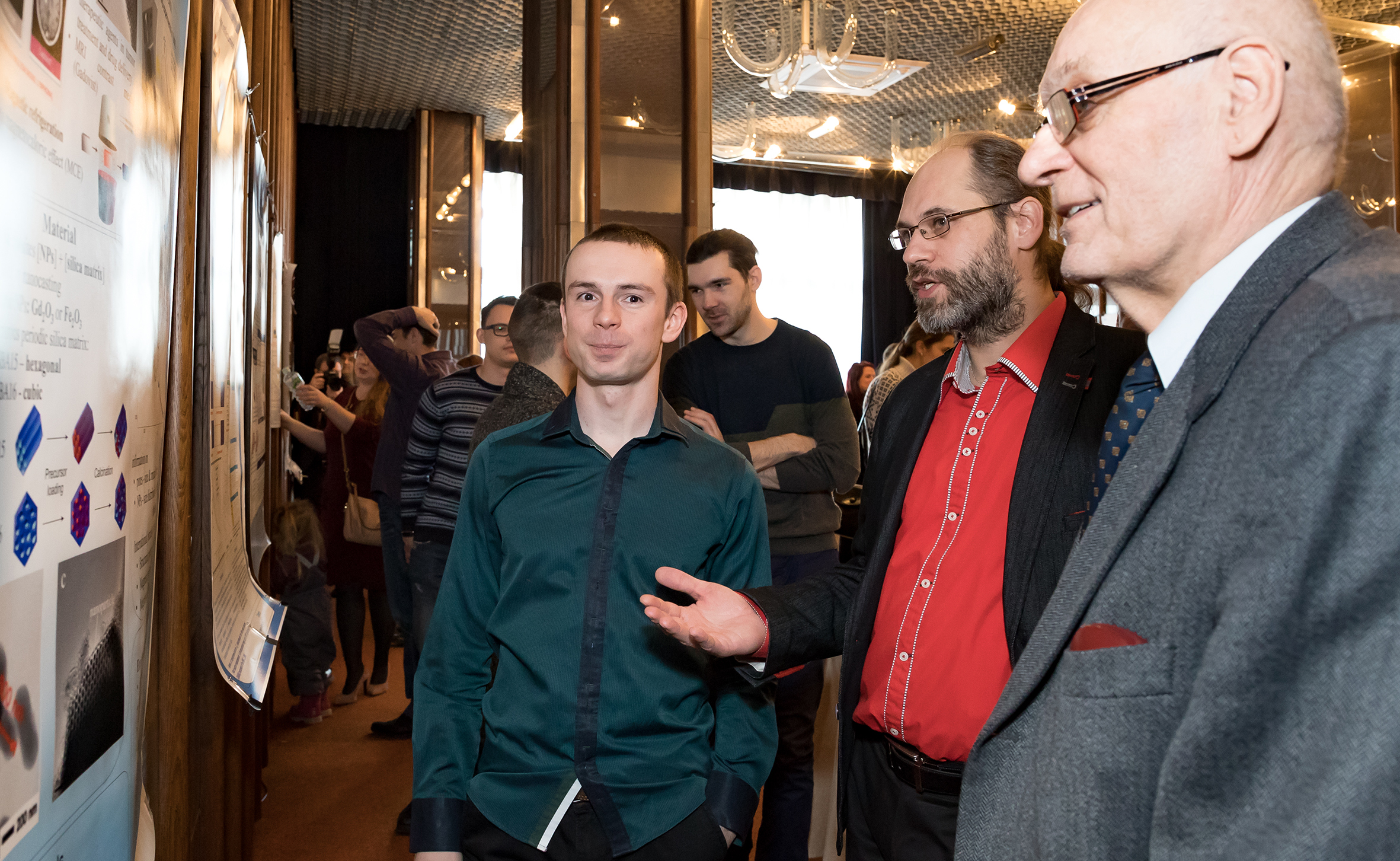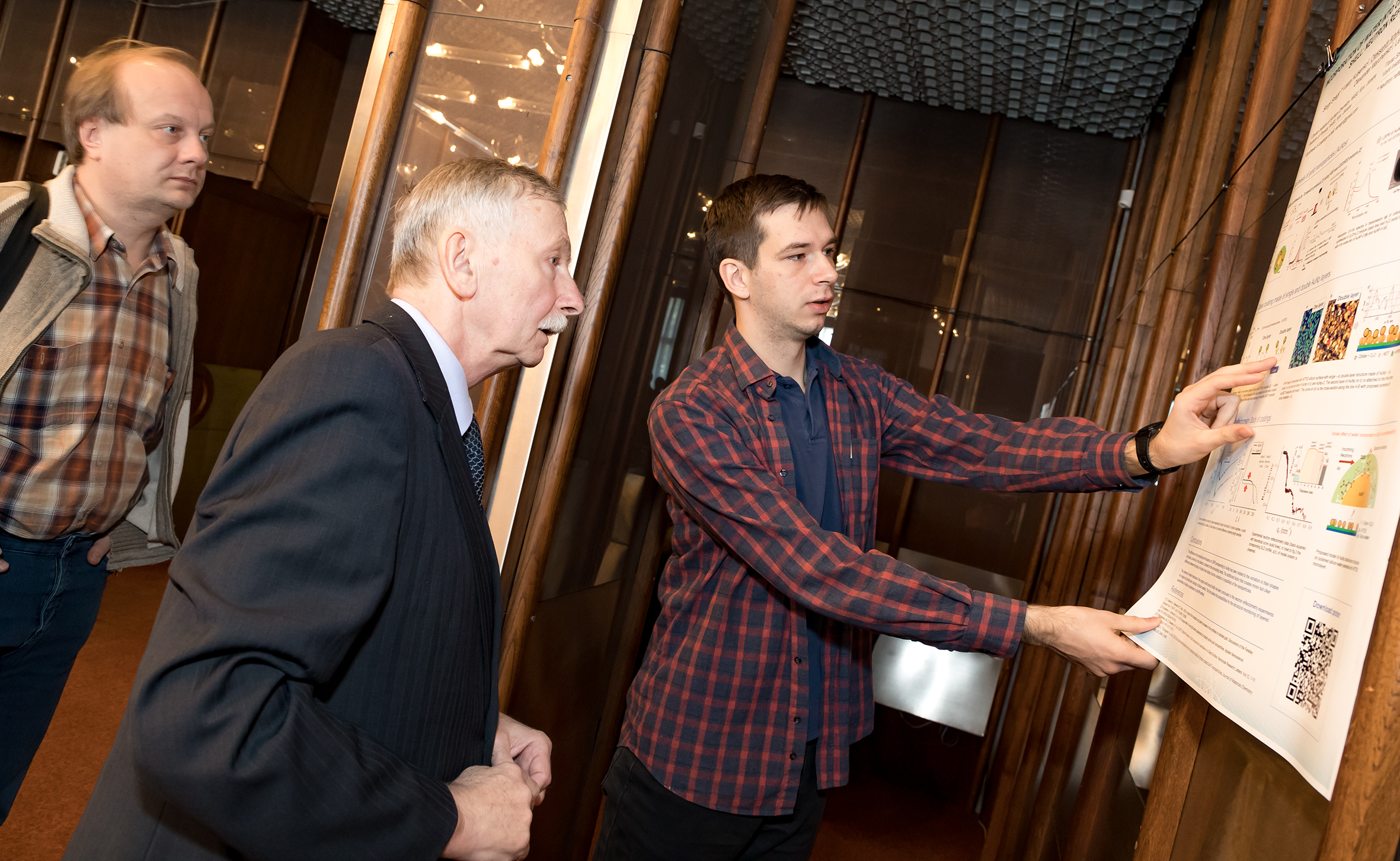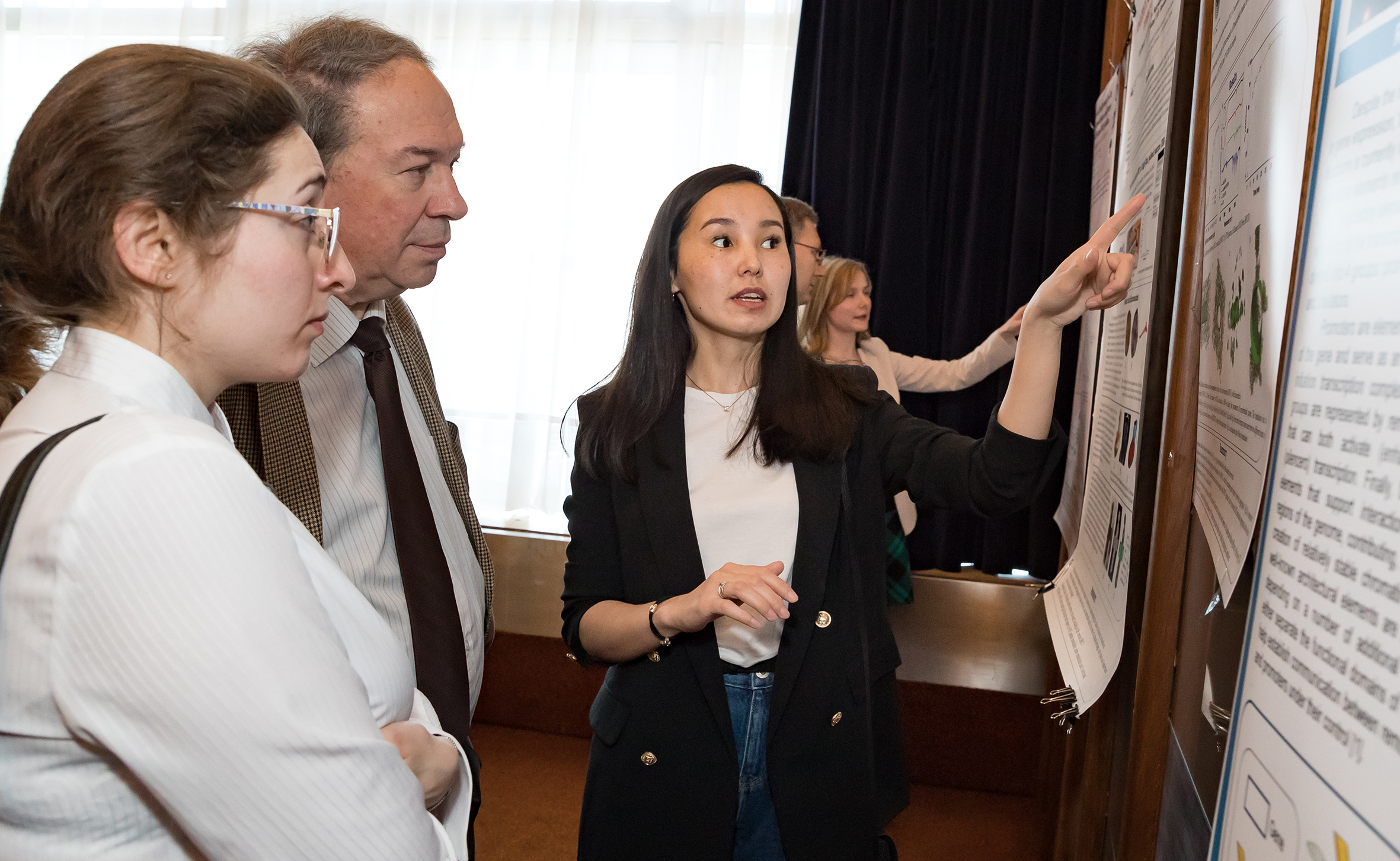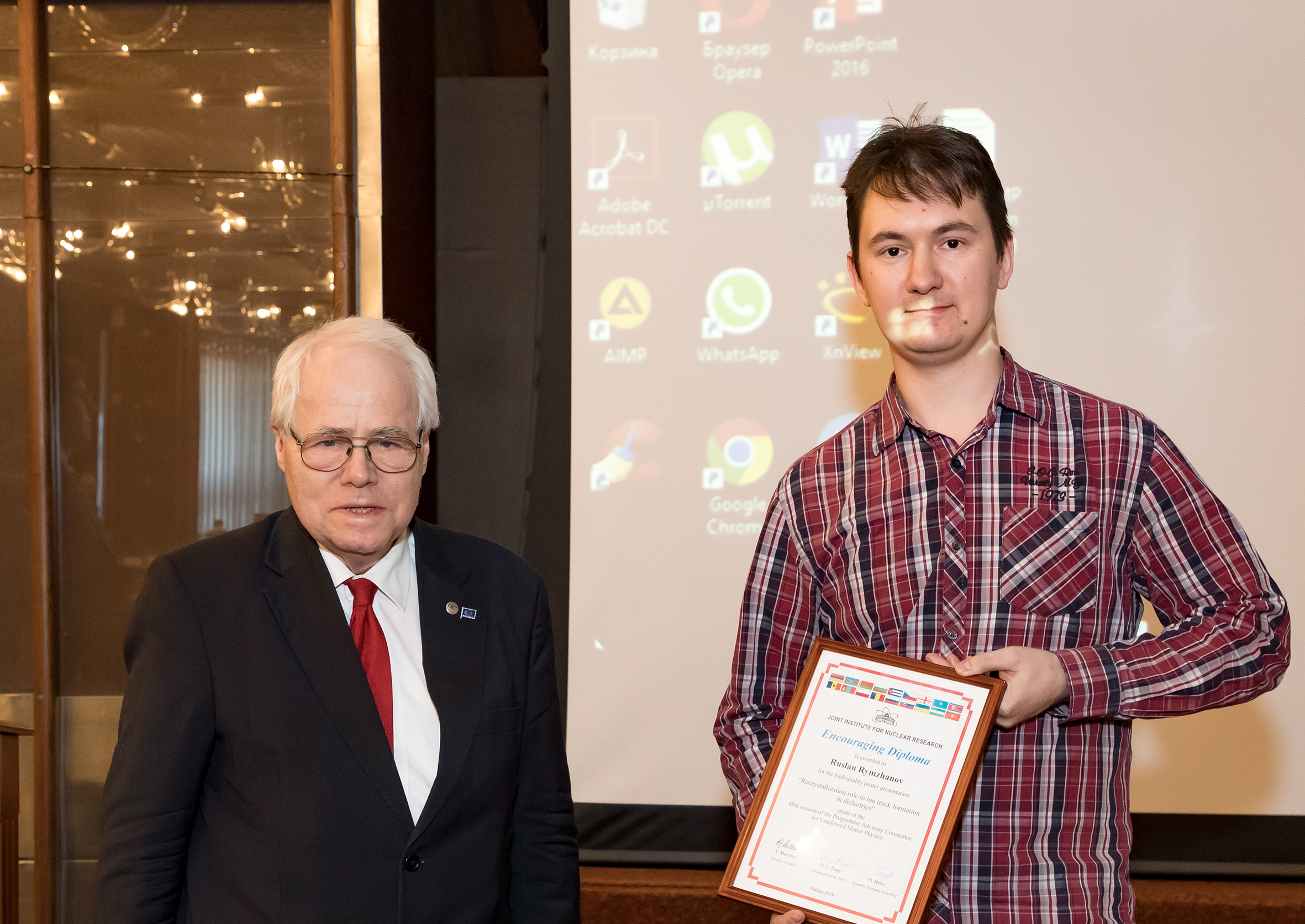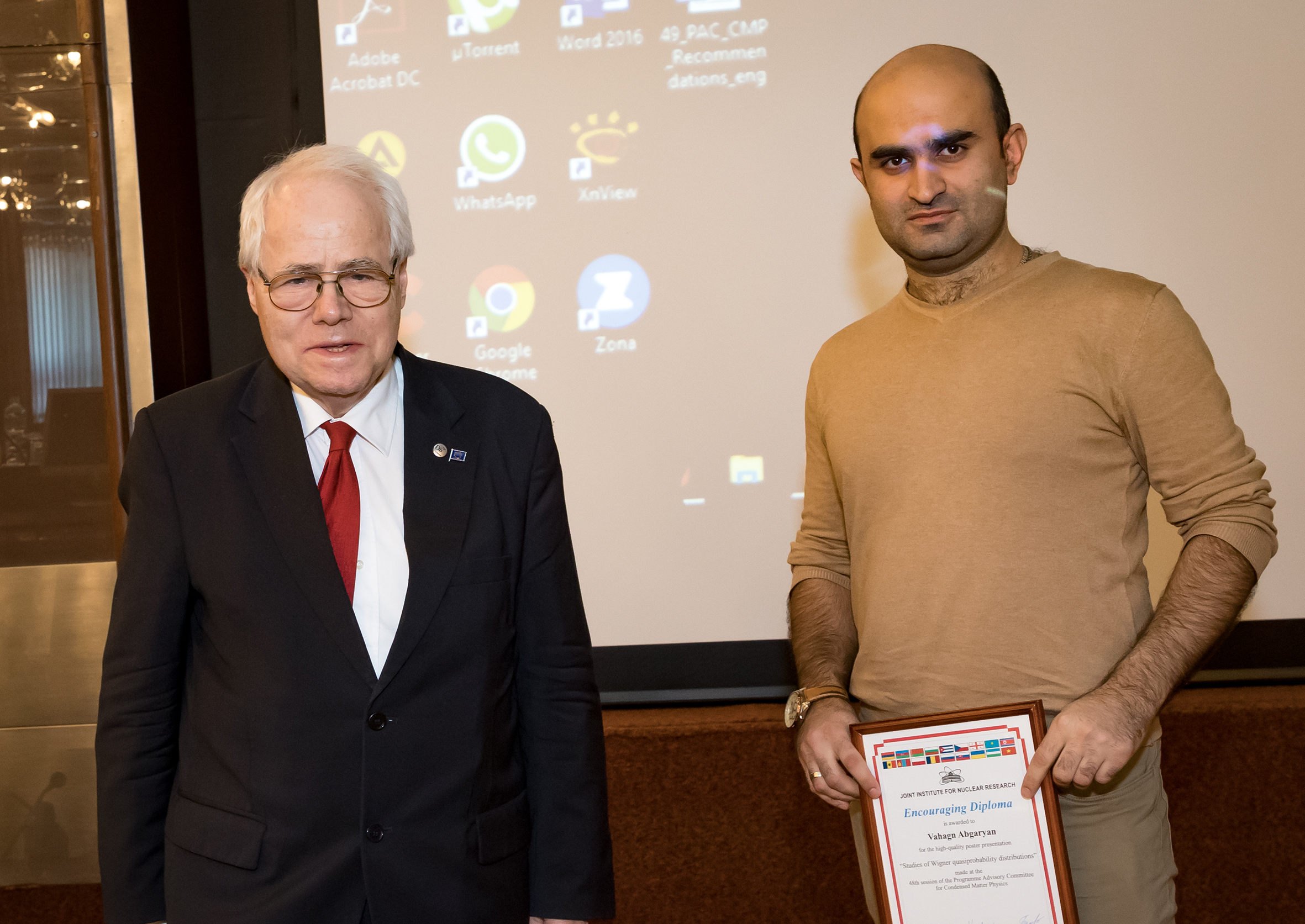Discussion will be continued
News, 14 February 2019
On 24-25 January 2019, the 49th meeting of the Programme Advisory Committee for Condensed Matter Physics was held.
FLNP Director V.N. Shvetsov presented two reports: “On the IBR-2 status” and information about an intent to open new themes, namely “Development of the critical design report for a new Dubna Neutron Source (DNS-IV)” and “Construction of the Laboratory for Structural Research of Macromolecules and New Materials at the SOLARIS National Synchrotron Radiation Centre of the Jagiellonian University (Poland)”. D.P. Kozlenko presented an overview of major scientific and instrumentation developments of the past year. The current state of the FSD diffractometer was reported on by G. Bokuchava. A.M. Balagurov, and A.I. Ioffe made a report on the current state of and prospects for the new neutron source. Scientific reports were made by F. Mezei (ESS, Swiss, HAS Wigner – Hungary) – “Instrumentation and moderators at long pulse neutron sources” – and by JINR staff members E.A. Kazima, E.B. Dushanov and I.D. Ivantsov. Participants of the meeting visited the Flerov Laboratory of Nuclear Reactions.
V.N. Shvetsov was the first to answer the questions of journalists:
– As I have already said in my report, the past year cannot be called the most successful in the reactor’s life. On the other hand, there were positive moments as well: there is an enormous amount of equipment we had no time to replace during the modernization. It is obvious that the service life is expiring, it is regularly replaced, and we have plans for its replacement until 2026. It happened that a set of several breakdowns of various elements of the equipment led to the miss of two cycles in 2018. In addition, processes started, which also happened at the old IBR-2 reactor, with a particular increase in pulse variation. As our predecessors in 1997, we decided to use a lower level of the reactor’s power to guarantee stable operation of the facility. But still, all these fluctuations are far from being critical for the safe operation of the reactor and turning on the auto safe mode, as I noted in my report. We are far from this, but we decided to decrease the power and increase the coolant rate to provide stable operation. We decreased the power for 300 kW, so instead of 2 MW, there will be 1,7. Moreover, in order not to interrupt work of users-physicists, we will increase the duration of runs: this year, we are planning to operate 500 hours more than usually for the experiment.
If we sum up the milestones of the past year at large, then we will see that the number of publications made by the staff of the Laboratory remains the same. The staff of the Department of Condensed Matter participated in conferences 1,5 times more, maybe because the reactor operated less: in 2017, there were 136 business trips, this year – 193. There are advantages in it: it means that people communicated more and presented results of their research. That is why the past year cannot be called outstanding in any terms. We just worked well.
If we consider the future of the Laboratory, considerable progress was achieved in justification the need for the new source. Yesterday, the meeting of the working subgroup for the new neutron source under the working group of the JINR strategic planning was concluded. Many participants noted the progress achieved after the working meeting held in December: work of NIKIET and our staff members became visible. Sergey Culikov demonstrated the beam dividing at the future reactor with particular moderators. So, work is underway.
– Has been one of the two projects chosen?
– No, we are far from it. The criteria for the choice will include economy, parameters, safety. All these issues can be considered only by the designer; we cannot correctly calculate all this that is why we are waiting for the NIKIET to conclude its work that will give an opportunity to choose a particular variant.
D. Chudoba made a report on the FLNP user programme:
– It has become a tradition to make a report on the implementation of the user programme at the reactor, present statistics of experiments and etc. at January meetings. At the previous January meeting, our Laboratory was offered to develop a new user system for submitting offers for experiments. We spent the whole 2018 working on it, and today I will present for the first time not yet concluded results, this work continues. In fact, 2018 was difficult for users, 50 experimentators came to us: about 30 of them were from Russia, there were also specialists from Germany, Poland, Ukraine, Romania, Bulgaria, and one researcher came from Egypt. 2017 is repeated in terms of users’ research fields: material science won the first place – about 40 per cent of research at the facility was devoted to it, less per cent of research was carried out on physics, chemistry, applied sciences, biology, and geology.
– The two key topics of discussions at this meeting were the present state of the reactor and the concept of the project for the new neutron source, – I started a conversation with PAC Chairman Professor D. Nagy with this statement.
– You have correctly named two major aspects of the tasks of this PAC meeting. As usual, both the technical state and scientific tasks of the IBR-2 were discussed as well as the development of the new project of the next neutron source in Dubna. We included it in the recommendations of the session. As for the first aspect, the past year was not successful for the IBR-2 as far as four out of nine planned runs were cancelled for technical reasons. That is why new proposals for world-level experiments were denied and rescheduled for half a year later. Nevertheless, three scientific and two technical runs were successfully held during these six months, and their results were heard at this PAC meeting with great enthusiasm. The programme committee also highlighted that the next time these results should be analyzed in terms of operation of the equipment and all spectrometers. Of course, the technical state of the equipment can be improved, and the Committee will welcome the presentation of the scientific results, which will demonstrate possible ways for the improvement of the equipment operation. It was one of the topical issues at the meeting.
Another significant issue of a long-term perspective was the creation of the new neutron source in JINR. I should say that the process undergoes well and in the right direction. The programme committee congratulated the FLNP Directorate on the successful work as well as partially the JINR Directorate and, of course, the JINR strategic working group. The process is now at the stage of preparing the draft of the project. At the moment, there are two major schemes: one is for the new neutron source at the accelerator (it may be a superbooster or other variants, I won’t speak about its technical details now) and the other one is a new pulse reactor, as the IBR-2 that will become the IBR-3, of course, with a considerably improved parameters. Nowadays, the strategic working group and the PAC have no biased opinions; we are open for both offers. They should be worked out in greater details; we are waiting for the next assessment of work at the PAC meeting in June. As I see, preliminary conclusions about the concept of the new source will be made and then details will be worked out.
The programme of scientific research should be developed in parallel to it. I should highlight that scientific research on the study of condensed matter has a meaning different from nuclear or particle physics. It is not difficult to determine the aim of research in the latter ones. For examples, CERN decided: let’s find the Higgs boson. It was not a complicated task, although, of course, it was difficult in technical terms but it was easy to concentrate on this particular task. It will not work with applied research, in condensed matter physics. We need to single out what particular spectrometers will be exactly in demand and in what diapasons they should operate in 10, 20, 30 and even 40 years. This new neutron source will be brought into service in the middle of the 2030s. So, now, it is impossible to determine what scientific aspects will be interesting in 2037. It is nonsense. However, we are able to suppose what methods will be still up-to-date. They will include low-angle scattering, diffractometry, reflectometry, tomography and others.
At least, we can now say yes or no to this or that method. Basing on it, we can say what parameters are needed for the new source. With this assessment, I hope we will be able to decide in a 1 or 1,5 years to what scheme we should adhere – the new pulse reactor or the source at the accelerator. I should repeat again that both variants are satisfactory for us. The discussion must be continued.
– Experts of the Committee evaluated scientific papers of young scientists as usual. This time FLNP and DLNP staff members participated in the poster session.
– I should note that there are two sides. These scientific presentations are prepared not only by young scientists. We were pleased to watch all presentations. The first one, by the way, was perfect. To be honest, we did not much like the 7th and the 3rd posters: not their scientific parts but the way of presentation. It should be improved, and the next time we would like to presentations to correspond to certain demands of presenting information. I would like to repeat that my comments do not concern the scientific part. Scientific posters should be presented at PAC meetings with regard to particular rules. Another situation is seen in posters prepared by young scientists. They greatly explained their results. We chose three best among them and the first one will be presented at the meeting of the Scientific Council in February.
***
Tatyana Nagornaya with her report “Сlusterization aspects of fullerene C60 and C70 in toluene/N-methyl-2-pyrrolidone mixture according to SANS, SAXS and DLS data” won the largest number of votes of PAC members, Nadezhda Belozerova became the second (“Investigation of crystal and magnetic structure of nanostructured complex oxides of transition metals in wide temperature range”), the third place was won by Vladimir Zhaketov (“Isotope-identifying neutron reflectometry at the pulsed neutron reactor IBR-2”).
Olga Tarantina, JINR Weekly Newspaper
Photos by Elena Puzynina, Scientific Information Department

